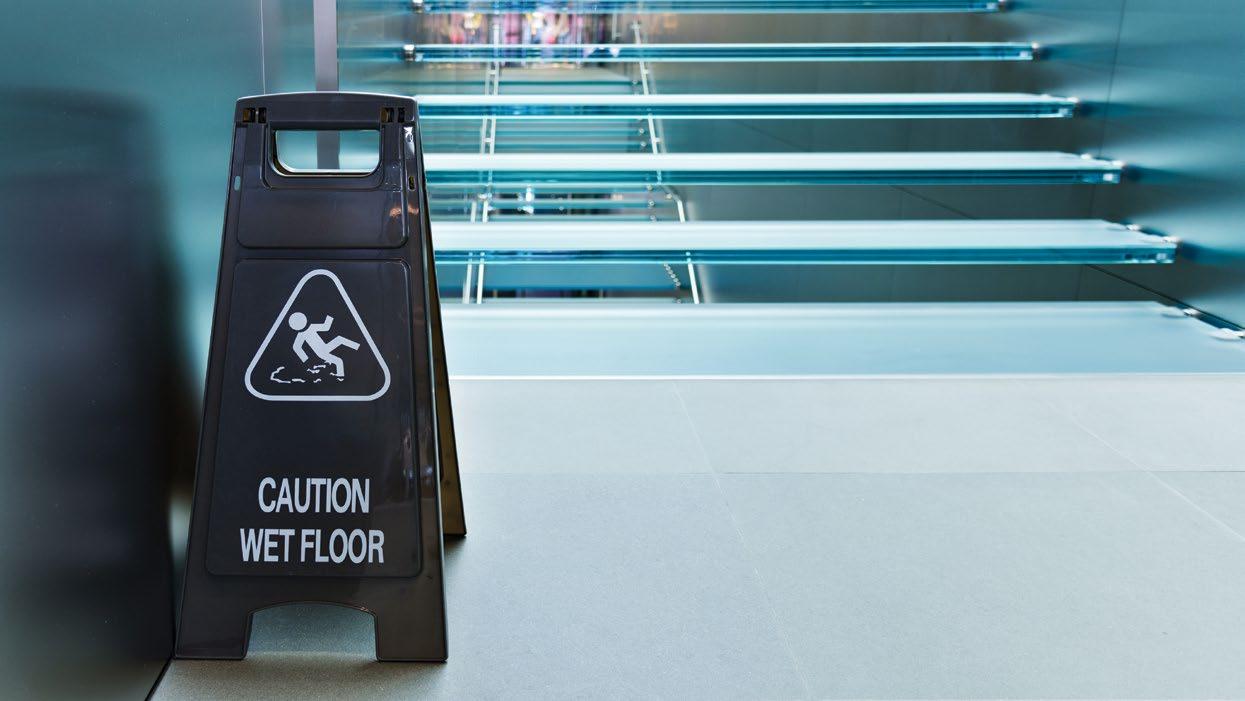

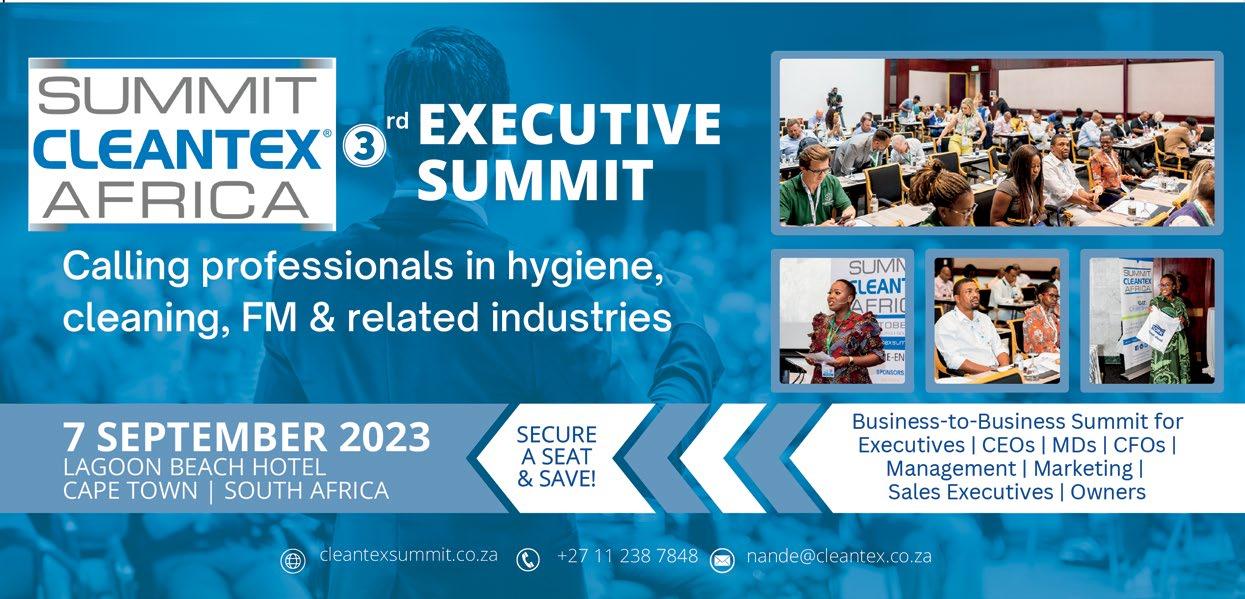
® Hygiene • Cleaning • Pest Control • Laundry • Facility Management Services January/February 2023 In this issue: Sustainability trends for 2023 Contract cleaning Hygiene compliance on food processing Business value of autonomous robots
African Cleaning Review is the continent’s only dedicated hygiene, cleaning and facility management trade magazine, published every alternate month for more than 21 years. Every issue offers readers a well-balanced mixture of industry news, people and events, new product updates, features and association news.
www.africancleaningreview.co.za
We ensure a premium hygiene experience, and we know how hygiene requirements change and are always looking at ways to improve. Discover the brand for modern hygiene solutions – quality, value for money and innovation. Good hygiene does not tolerate any compromises, neither do we.

www.bellzonehygiene.co.za
Cleantex Africa is the premier event in Africa dedicated to the professional cleaning, hygiene, laundry, pest control and facility management industries. The next edition of this expo takes place from 16–18 October 2024 in Johannesburg, South Africa.
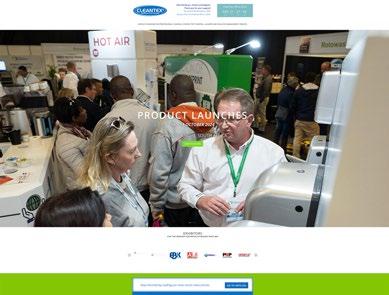
www.cleantex.co.za
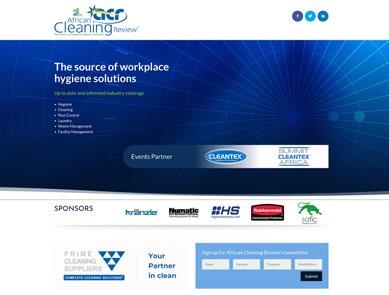
Tork is the leading global brand in workplace hygiene. We are passionate about helping you improve your business – from raising the bottom line to making your work life better. This is the ambition that drives our people and our cutting-edge innovations in circularity, well-being and health.
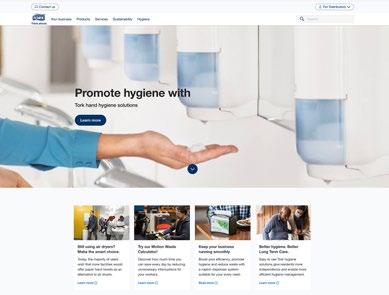
www.tork.co.za
Prime Cleaning Suppliers is a leading South African cleaning-solutions supplier, established in 1996. Prime Cleaning Suppliers has spent a number of years building strong brands, adhering to applicable standards and reinforcing their commitment to customers. Prime Cleaning Suppliers also represents the following brands: Aquarius, Kleenex, Scott, Wetrok, Wypall and Rubbermaid Commercial Products.

www.primecs.co.za
Attend the 3rd Cleantex Africa Executive Summit in Cape Town, featuring a programme developed specifically for cleaning and hygiene professionals. Delegates will interact with top subject matter experts as well as network with industry peers to discuss best practices and emerging trends.
www.cleantexsummit.co.za
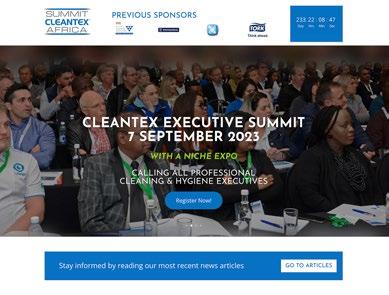
ABOUT US PRODUCTS SOLUTIONS SERVICES NEWS CONTACT US
you visited these industry websites?
websearch
Have
•
JANUARY/FEBRUARY 2023
VOL 24 NO. 1
Cover story
Cleantex Summit Africa 2023


Attend the 3rd Cleantex Africa Executive Summit in Cape Town, featuring a programme developed specifically for cleaning and hygiene professionals. Delegates will interact with top subject matter experts as well as network with industry peers to discuss best practices, emerging trends and network. Read more on page 15.


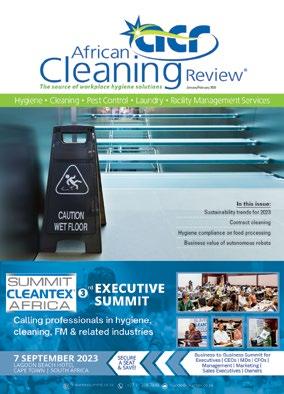
African Cleaning Review is aimed at end-users, contractors and suppliers of products and services to Africa’s Cleaning, Hygiene, Maintenance, Laundry, Pest Control and Facility Management Services industries. It is published every other month by: e-squared publications.
Tel: +27 (0) 11 238 7848 or +27 (0) 72 611 1959
PO Box 1976, Halfway House, 1685, South Africa
Email: africancleaningreview@cleantex.co.za
Website: www.africancleaningreview.co.za

@AfricanCleanMag AfricanCleaningReview

african-cleaning-review
Publishing Editor: Johann van Vuuren
+27 (0) 11 238 7848 or +27 (0) 72 611 1959
Email: africancleaningreview@cleantex.co.za
Advertising: +27 (0) 11 238 7848 or +27 (0) 72 611 1959
Email: africancleaningreview@cleantex.co.za
Operations and Accounts: Nandé Jacobs
Email: africancleaningreview@cleantex.co.za


All editorial contributions can be sent to the editor who reserves the right to publish editorial based on the strength of its content. No articles or photographs may be reproduced, in whole or in part, without written permission from the publishers. Although every effort is made to ensure the accuracy and reliability of material published in African Cleaning Review, e-squared publications and its agents can accept no responsibility for the veracity of the claims made by contributors, manufacturers or advertisers. Copyright of all material published in African Cleaning Review remains with e-squared publications and its agents.

•
•
Planned features for 2023
Feature sections in every issue:
• Laundry and dry cleaning review
•
• Facilities management review


March/April issue: Editorial deadline 10 February
• Digital and smart solutions
• High pressure cleaning
May/June issue: Editorial deadline 15 April
• Hard floorcare solutions
• Hand hygiene
•
•
July/August issue: Editorial deadline 15 June
• Healthcare cleaning and hygiene

• Wipes and wiping solutions
September/October issue: Editorial deadline 18 August
• Sustainability in cleaning

• Washroom hygiene
•
•
•
•
•
November/December issue: Editorial deadline 13 October
• Hospitality cleaning solutions
• Retail cleaning solutions

Published by:
Official publication and media partner of:
1 African Cleaning Review January/February 2023 9 Opinion 2
Is your cleaning company doing enough to promote proper hand washing? Industry News 4
•
Essity and Reckitt launch bespoke co-branded professional hygiene solutions
Supermarket trolleys made from hundreds of recycled milk bottles introduced
WFBSC Global Executive Summit 2023 to co-locate with London Cleaning Show Educational 6
Sustainability trends that will impact the cleaning industry in 2023
•
COVID-19 pandemic has made Europeans more 12 diligent about hand hygiene – survey Features Contract cleaning 8
Water-management tips for cleaning companies
Drive value with a better cleaning RFP process
Setting basic workplace cleaning standards for 2023 Food-processing hygiene 16
•
•
•
Tips to sustain hygiene compliance in food processing
Keeping floors clean and food safe Editorial 11
Numatic: Cost-effective, versatile and sustainably engineered
Review 20
•
FM
Why there is reason for hope in SA’s commercial property sector in 2023
Drafting an integrated waste management strategy for retail business Laundry Review 22
The healthcare laundry’s role in infection prevention Advertorial 25
ISSAPULIRE: Invitation to join the 2023 tour to Milan, Italy Trends and Technology 26
The business value of autonomous mobile robots contents
6 4 16
proper hand washing? from the
A new year with new challenges and new opportunities
Welcome to the first issue of the new year. I am confident you are all back at your desks following an enjoyable holiday period and now having to plan your day around a constantly changing loadshedding schedule. Despite dreadful periods of up to stage 6 loadshedding, we managed to compile this riveting and thought-provoking issue together with the annual Buyer’s Guide, and have both ready for distribution during the first week of February as usual.
Apart from industry news, this issue takes a closer look at contract cleaning and food-processing hygiene as its main features, survey results on post-COVID hand-hygiene practices and a healthcare laundry’s role in infection prevention to highlight a few articles.
Also, look out for details about the upcoming Cleantex Executive Summit to be held in Cape Town later this year. Who would believe that no fewer than 5 years have already elapsed since the previous Cape Town Summit (due to the COVID-19 pandemic restrictions)? There is also the upcoming tour for cleaning professionals to Italy’s foremost cleaning exhibition to consider.
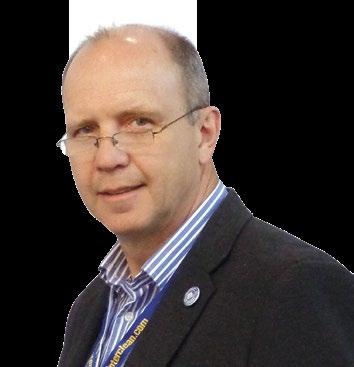
Remember, digital issues of African Cleaning Review remain available via our website throughout the year, which serves as a boon for those that want to refer back to articles or are sourcing products, equipment and services as contained in the annual Buyers Guide
Typically, there is a lot more in this issue to consume; enjoy the read. May your year be filled with an abundance of new opportunities.
You know it’s one of the best ways to reduce the spread of germs, but how well do you promote proper hand washing? It is your job as a commercial cleaning company to promote proper hand washing. It’s an employee issue, for sure. Proper hand washing helps keep them healthy and safe. You may even have rules around employee hand washing. Indeed, good hand hygiene is part of your general workplace safety, and it’s an essential part of donning and doffing PPE.
What about your clients and their customers, though?
Promoting hand washing is probably not in your contract. However, you know that the secret to business success is providing excellent work and unbeatable customer service. You also know that one part of your job is reducing the spread of bacteria, viruses and allergens. Put that all together, and you can promote proper hand washing to make your clients happier and safer.
First, let’s assume you and your team are keeping up with hand washing. That would be the drill of warm water, soapy lather, scrubbing your hands (front and back), fingers and nailbeds for 20 seconds. That’s long enough to sing one verse of The Beatles’ ‘A Hard Day’s Night’. If soap and water aren’t available, use a hand sanitiser that contains at least 60 percent alcohol. That’s not news to you, though. So let’s move on to why hand washing is
First, let’s assume you and your team are keeping up with hand washing. That would be the drill of warm water, soapy lather, scrubbing your hands (front and back), fingers and nailbeds for 20 seconds.
How to promote proper hand washing in your facilities
First, let’s answer the question: Are you doing enough to promote proper hand washing? If you aren’t doing anything at all, the answer is no. If you are making efforts, are you going beyond the obligatory washroom sign stating that employees must wash their hands? I know what you are thinking. At least, I know what I’d be thinking if I was reading this. But how, exactly, should a contracted commercial cleaning company promote proper hand washing?
so important and some of the ways you can promote proper hand washing in the facilities you service.
Jumping straight into the facts, here are three reasons from the CDC why hand washing and hand-washing education remain essential.
• Washing your hands with soap and water reduces “diarrhoea-related sicknesses” in children by about 30 percent and up to 40 percent in the general population.
• Proper hand washing reduces respiratory infections like colds or
2
opinion
editor
Is your cleaning company doing enough to promote
pneumonia by about 20 percent.
• Hand washing reduces school absences “due to gastrointestinal illness” by up to 57 percent.
Contrast that with the fact that “estimated global rates of hand washing after using the toilet are only 19 percent.” That doesn’t even count coughing, sneezing or blowing your nose.

So, what can you do? After all, you are ‘just’ the commercial cleaning company. As long as you have buy-in from the facility manager or someone in a similar position, there’s a lot you can do.
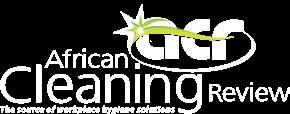
• Add occasional sections to your newsletter that promote proper hand washing. A newsletter, in general, is a great way to boost your customer service levels. You can share updates on new environmentally friendly cleaning products, tips for people to use at home, updates on general cleanliness or health concerns, and, of course, hand-washing education.
• Place posters in strategic locations, such as the break room where people will be eating or the washroom. Free posters can be downloaded from the Centers for Disease Control and Prevention (CDC).
• Add fun graphics to your email newsletters. This strategy brings the visual interest of a poster or gif to the written sections of your email newsletter. You can get some of these from the CDC as well.
• Add sanitiser stations in heavily trafficked areas. While not as ideal as washing hands with soap and water, using sanitiser is infinitely better than not washing hands at all.
• Keep hand-washing areas clean and well stocked. You can’t control
whether or not people wash their hands regularly. You can, however, create the conditions that encourage and promote proper hand washing. By keeping soap dispensers and towels stocked, and faucets, handles, and counters clean, you offer people a welcoming space to approach and feel good about hand hygiene. Again, it’s not necessarily your job to get everyone to wash their hands. But there’s a good chance you are the resident expert on bacteria, viruses and how germs spread, and you know how beneficial hand washing is. By trying to add some of these ideas to your processes you will enjoy the benefit of working in healthier environments, according to JanitorialManager.com.
3 African Cleaning Review January/February 2023 opinion
Contact us for more information regarding cost-effective advertising options: africancleaningreview@cleantex.co.za | www.africancleaningreview.co.za Promote your company in The Source of Workplace Hygiene Solutions! Reach your target market cost effectively by advertising in African Cleaning Review. The direct link to end-users, building service contractors, FM service providers and key institutional sectors.
Again, it’s not necessarily your job to get everyone to wash their hands. But there’s a good chance you are the resident expert on bacteria, viruses and how germs spread, and you know how beneficial hand washing is.
Essity and Reckitt launch bespoke co-branded professional hygiene solutions
trusted leading professional hygiene brand Tork with the well-known consumer recognition of the Dettol and Sagrotan brands of Reckitt, the leading disinfectant manufacturer in the world. The products will give professional hygiene customers added value from two widely trusted and efficacious brands. The new range is available across the UK, Ireland, Germany and Austria from January 2023.
The co-branded range of products include:
This collaboration provides customers with an expanded assortment of products that are critical in breaking the chain of infection. Research shows that 88 percent of people expect businesses to implement higher standards of disinfection to keep premises hygienically clean; however, up to 70 percent of businesses need guidance on how to best deliver these expectations of the public.
Essity and Reckitt, two leaders in the global hygiene and health sector, have announced the launch of a range of co-branded disinfection products for professional hygiene customers – combining the power of their Tork, Dettol and Sagrotan brands –across four countries in Europe.

This collaboration combines the scale and experience of Essity’s
• Antibacterial Multipurpose Cleaner spray
• Antimicrobial Foam Soap and a Hand Sanitizer Gel for use in Tork dispensers
In the aftermath of COVID-19, hygiene expectations from the public have shifted dramatically as people return to day-to-day public life with a heightened awareness about the spread of bacteria and viruses.
Both companies have a strong commitment to sustainability. The packaging of the product range is designed to minimise waste. The Antibacterial Multipurpose Cleaner spray comes in a fully recyclable* bottle and trigger and is manufactured with zero waste to landfill. The soap and sanitiser products have recyclable* and collapsible bottles.
* In countries that have recycling schemes for these products
Supermarket trolleys made from hundreds of recycled milk bottles introduced
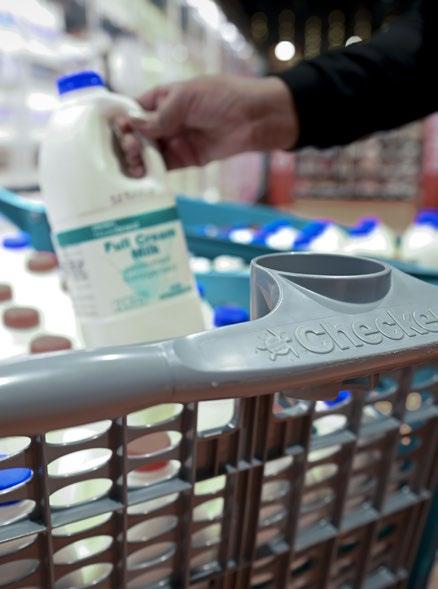
Retail giant Checkers is rolling out new shopping trolley baskets made from 100 percent recycled plastic – mostly old milk bottles –thereby diverting more than 40 tons of recyclable material from landfill.
The retailer’s trolleys have contained at least 35 percent recycled content since 2018. Now it is the first major South African retailer to have trolley baskets made from 100 percent recyclable material. The new trolley baskets come in classic and mini sizes, each made from 180 and 110 old milk bottles respectively.
“We’ve set ambitious targets to reduce our environmental impact and will continue to step up our efforts to reach these as part of our wider sustainability strategy. This change is just one of several initiatives we have introduced across our operations,” says Sanjeev Raghubir, Group Sustainability Manager.
This move is part of Checkers’s
ongoing commitment to environmental sustainability and promoting a circular economy.
Checkers has introduced several other environmental initiatives:
• Nine years ago, it became the first national retailer to introduce shopping bags made from 100 percent recycled content in its supermarkets.
• In 2018 Checkers introduced ‘planet’ bags, rewarding customers every time they re-use the bag.
• During 2022 Checkers became the first South African retailer to replace its rotisserie chicken packaging with fully recyclable, responsibly sourced cardboard boxes.
• It is also the first retailer to recycle sanitising wipes from its supermarkets.
• Checkers Sitari is the first premium South African supermarket to run entirely on renewable energy.
4 African Cleaning Review January/February 2023 industry news
WFBSC Global Executive Summit 2023 to co-locate with London Cleaning Show
After a three-year hiatus due to the COVID-19 pandemic, the World Federation of Building Service Contractors (WFBSC) is set to host its Global Executive Summit (GES) from 14–15 March 2023, in London, alongside the London Cleaning Show.
Designed exclusively for CEOs, COOs, owners and senior leadership within contract cleaning and facilities services companies, GES 2023 will provide insights, training and networking, as well as access to leading vendors showcasing the latest technology at the London Cleaning Show.
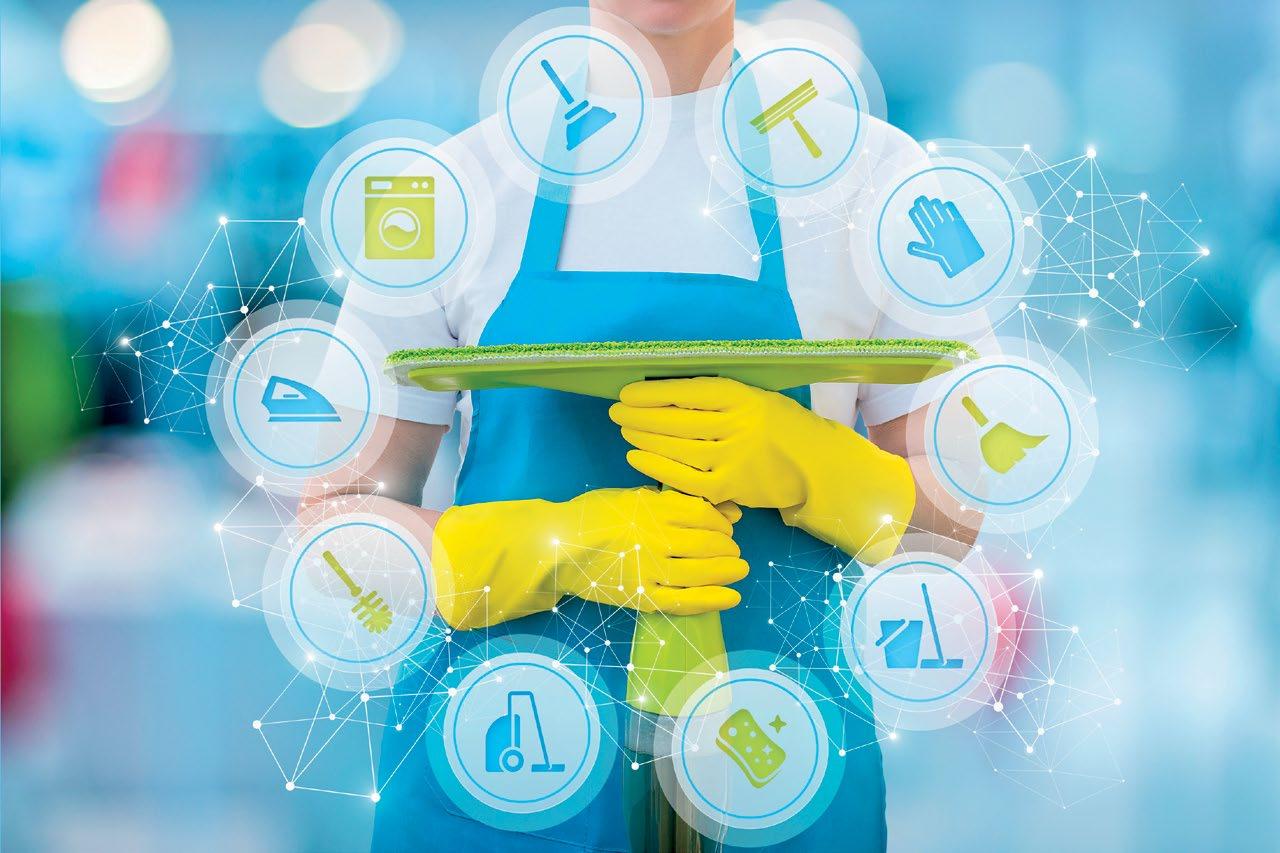
“The 2023 event is designed to meet the unique needs of executive


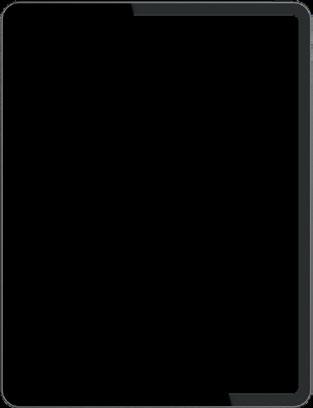
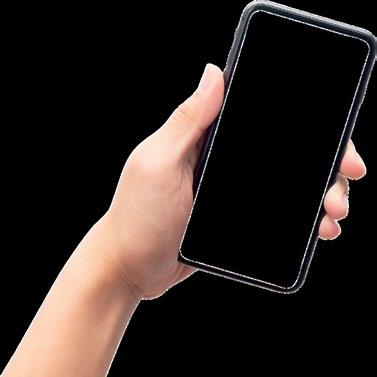
leaders in global BSC firms,” says Doug Cooke, 2023 GES chair and chairman of UK-based Principle Cleaning Services. “The format, speaker selection and session types all deliberately allow for maximum impact and engagement amongst attendees.”

GES 2023 features one day of sessions covering topics including executive leadership, industry transition, ESG/sustainability and labour challenges specific to the building service contracting industry. The format of the programme will be a mix of lectures, case study exercises, panels and networking events featuring experts, academics, industry
CEOs and customer perspectives. WFBSC president and CEO and owner of Harvard Maintenance, Stan Doobin, CBSE, says: “The Board of Directors is excited to bring together this elite group of executives from across the world and from many of our member associations”.
The WFBSC is made up of associations throughout the world that represent the interests of building contractors, manufacturers and suppliers of products or services utilised in the building service contracting industry. Attendance for this event is limited to the first 75 qualified participants. To register, visit: www.wfbsc.org/Events/Global-Executive-Summit.
Looking for cleaning or hygiene products /services?
HYGIENE | CLEANING | PEST CONTROL | LAUNDRY | TE MANAGEMENT | FACILITY MANAGEMENT SERVICES
africancleaningreview.co.za
The definitive online reference guide for workplace hygiene solutions then looknofurther...
industry news
Sustainability trends that will impact the cleaning industry in 2023

Steve Ashkin of The Ashkin Group, an internationally recognised consulting firm working to green the professional cleaning industry, believes that 2023 will be a pivotal year for the professional cleaning industry when it comes to sustainability. “While many larger companies have sustainability strategies in place, it remains a ‘slow burn priority’ for smaller companies in the industry. That’s going to change in 2023,“ says Ashkin.
Among the reasons he cites for this are:
• Awareness of the correlation between violent storms and climate change
• Volatile energy costs/inflation
• Supply chain disruptions
• The need to enhance efficiencies to lower operating costs
• Consumer demand
• New business opportunities With these factors in mind, Ashkin says the industry can expect the following seven sustainability trends in 2023:
1. Greater transparency: Cleaning supply organisations will become much more transparent about how products are manufactured and transported and their environmental impacts.
2. ‘Foot-printing’: More companies will perform foot-printing – assessing a product’s environmental impact
from cradle to grave and share this information with end customers.
3. Address international regulations: More governments will pass laws impacting cleaning supply companies worldwide. In 2023, for example, Germany will require companies to monitor supply chains for human rights violations and ensure partners are not causing environmental degradation.
4. Reshoring/nearshoring: Due to supply chain disruptions and to reduce the use of natural resources and greenhouse gas emissions, more cleaning supplies manufacturers will relocate manufacturing in or closer to their home country.
5. Leaner factories: With reshoring and nearshoring, factories will be built or updated that use less energy and water and produce less waste than the factories they are replacing.
6. End-user educating: More cleaning product distributors and building service contractors will become educators, instructing their clients on ways to operate more sustainably and lower facility operating costs.
7. Refurbishing: Expect more cleaning product manufacturers to refurbish discarded cleaning equipment. This will be driven by more end-users asking for recycled and refurbished cleaning machines. “And one more thing,” adds Ashkin. “If there is one word that will describe sustainability in 2023, it’s accountability. End customers will want manufacturers, distributors and cleaning contractors to all be more accountable for the steps they are taking to protect people and the planet.”
For more on sustainability in the cleaning industry, visit: www.ashkingroup.com
6 African Cleaning Review January/February 2023 educational
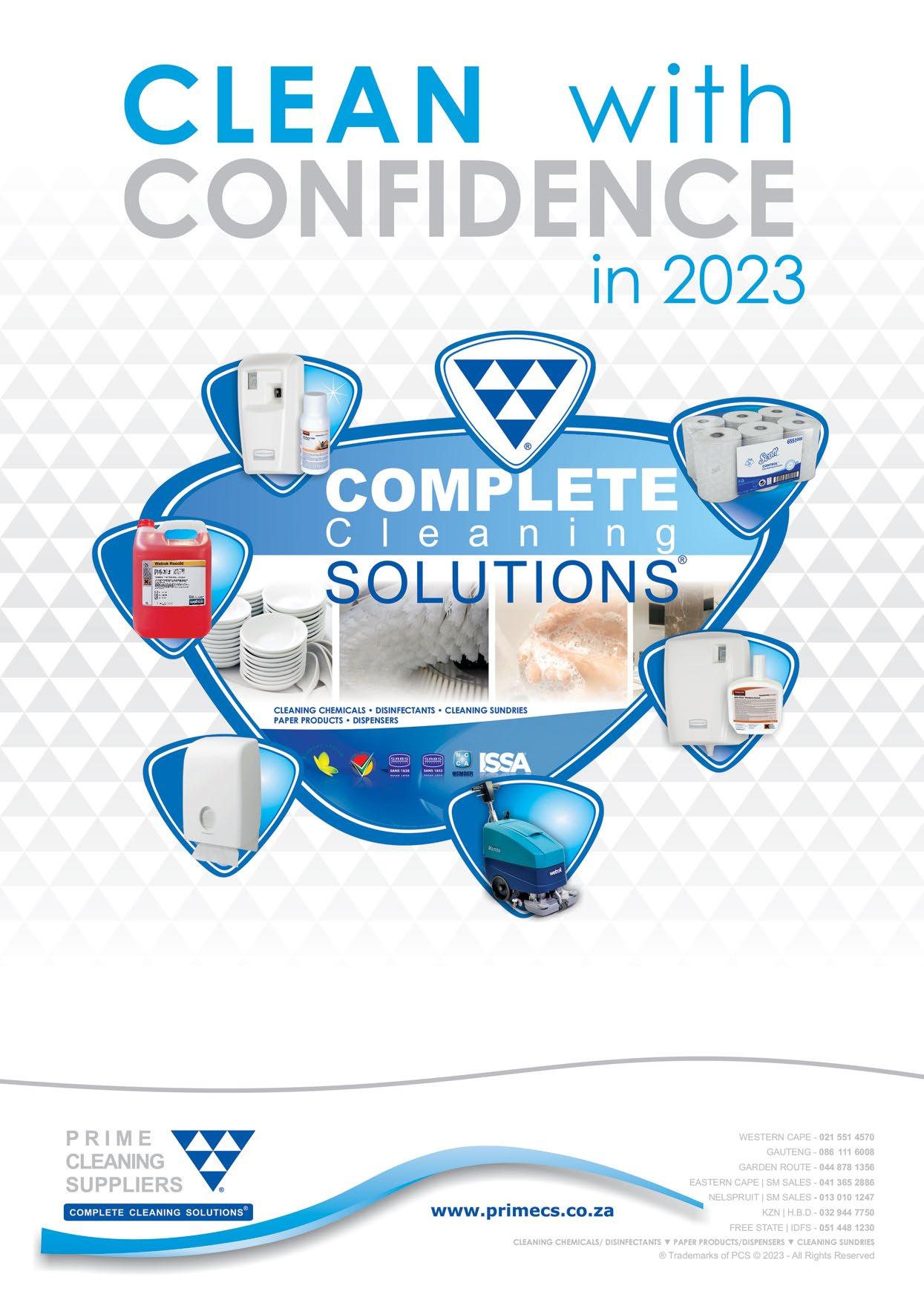
Water-management tips for cleaning companies
Cut down on waste in your commercial cleaning business with these watermanagement tips based on verified conservation practices. There’s no way around the fact that the commercial cleaning industry uses a substantial amount of water. Some of it is unavoidable, as we dilute cleaning concentrates or steam clean carpets. However, there’s also a lot of room for improvement and cutting down on waste. According to Janitorial Manager, these water-management tips can assist to take your cleaning organisation to the next level.
First, let’s look at some of the reasons water management is so important. Conservation is certainly a valid and admirable goal on its own, but using excess water is also expensive. The engineering department at the University of Nebraska conducted several studies on water usage in different cleaning situations. In one, they found that switching from standard cotton mops to microfibre cloth mops for one year could save over 87,000 litres of water and ZAR83,124 in supplies and utility costs. They also found that a microfibre mop saved an “average of six minutes of labour per room,” while potentially reducing worker injuries due to its lighter weight. Paying attention to conservation-informed water-management tips also makes your commercial cleaning business more attractive to many companies who will contract your services. Facility managers and business owners are looking for easy ways to improve their environmental friendliness. Whether it’s for marketing purposes or based on personal beliefs, a water-conscious cleaning company is something they can boast about on their website and social media channels. Still, you do need to use water in your commercial cleaning operations. So, how can you optimise your management of that resource, asks Janitorial Manager. The following 7 water-management tips will help you save money, save water and win over clients. Some of these water-management tips are easy to implement. Others may take some time and even a financial investment to put
into place. Just remember that any steps you can take in the right direction will eventually pay off.
1. Switch to microfibre mops
Just in case you skipped the introduction, microfibre cloths can save somewhere in the range of 85 to 90 tons of water each year and thousands in supply costs. That alone seems like a good reason to go water conscious!
2. Turn the water off when you aren’t using it
This is one of the most straightforward water-management tips, and yes, so many of us leave the water running much longer than we should.
3. Use automatic dilution systems
These systems take the guesswork out of the cleaner and water ratio. They’re set up to dispense the correct amount of cleaning solution, so you don’t waste either water or product, and you can rest assured that facilities are getting the needed amount for proper cleaning and disinfecting.
4. Set up a reporting system
Especially if repairs and maintenance are outside the scope of your contract, be sure you have a reporting system in place so employees can notify managers or building personnel if they notice any water leaks in the building.
5. Rent robots
No, robots will not replace your workforce. They will, however, conserve
water since they do the same job every single time.
6. Train, train, train
One of the water-management tips guaranteed to get results is to train your team. It doesn’t cost you anything, it makes your company better overall and ensures they will operate efficiently when it comes to water and product conservation.
7. Invest in energy-efficient, waterefficient cleaning machines
Similar to robots, new commercial cleaning machinery can do a lot to save water and also boost your team’s efficiency. New technology offers more scrubbing power, programmed solution and water doses, fewer leaks and spills, onboard water recycling, and may require less maintenance. If you have the ability, there are still more water-management tips you can take advantage of. Most, however, require changes to the facility structure, such as low-flow toilets, automatic-shut off faucets, more waterconscious landscaping or landscapewatering practices and similar projects. As a commercial cleaning business, you may not be able to do very much about these larger issues. And, it may take time before you can invest in newer, more technologically advanced machinery. However, there are still steps you can take to manage your water usage more effectively that will save money for you, for your client, and that is good for the environment. That’s what they call a winwin-win situation.
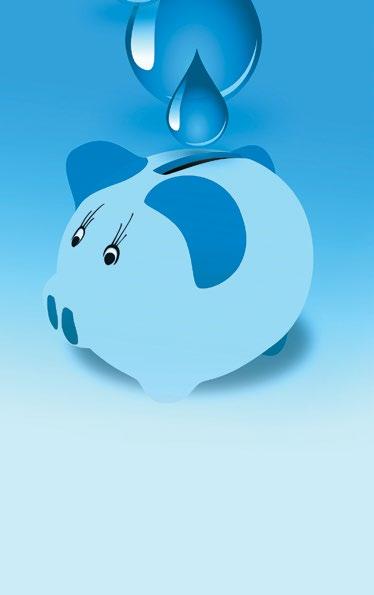
8 African Cleaning Review January/February 2023 feature contract cleaning
Drive value with a better cleaning RFP process
Having been in and around the cleaning business for over 30 years, I continually see the challenges that building service contractors (BSCs) and facility managers face with requests for proposal (RFPs). They chew up time and money, and if you’re on the losing end, it can be confusing and frustrating. The main complaint from the cleaning side of the table is that documents aren’t written by people who understand cleaning. Whoever creates specifications and cleaning plans should be an expert at cleaning, according to Randy Burke, founder of DCS Global, an international custodial advisory company specialising in servicing property and facility management in RFPs, auditing and cleaning for health.
In many cases RFPs are poorly written, lack key details, don’t reflect current requirements, or are too legalistic. This can lead to bids that are equally confusing, add unnecessary costs and deliver unacceptable cleaning quality. It doesn’t have to be like this. Here Burke offers three steps to consider while describing details about driving value through an effective cleaning RFP process and what facility managers need to know so they benefit from services they contract.
1. Be precise and clear in your requirements
The better the operational specifics in your RFP, the better the quality of bids you will receive. Ensure that cleaners understand the what, when, where and how of cleaning your facility.
• Update your contract to ensure that bidders have supply-chain contingencies and emergencypreparedness plans
• Make cleaning specifications
as clear as possible. Keep key performance indicators – or KPIs – at a reasonable level and spell out quality control requirements, minimum performance levels, penalties and bonuses
• Consider generic specifications for chemicals and equipment. More and more facility managers are conducting a separate RFP for consumables
• Ensure the contractor has up-todate building blueprints, including cleanable square metres by area type. Conduct a virtual or on-site building tour with the bidders, followed by a Q&A session.
2. Understand what has changed
Going to RFP is a good time to step back and re-examine the current cleaning needs of your facility. Although this sounds obvious, all too often people recycle proposals from years past because they just don’t have the time to update them.

• What has changed? This can include post-pandemic concerns; new tenants; reconfigured space for a fitness centre, day-care, or other amenities; and the latest technological advances
• Is your current cleaning plan optimised for variable occupancy? Do you still need the extra day-staff brought in for the pandemic?
• Does cleaning support your organisation’s environmental, social and governance (ESG) goals?
• Is your building too clean? An odd question, but I often see visual cleaning quality off-the-charts, which costs money and is unnecessary
• Have you considered implementing a cleaning-for-health regime? This can demonstrate care and concern for building occupants and help reduce absenteeism. GBAC STAR™ Facility Accreditation from the Global Biorisk Advisory Council™ (GBAC), a Division of ISSA, and DCS Global’s CLEAN + SAFE©Janitorial System are good starting points.
9 African Cleaning Review January/February 2023 feature contract cleaning
feature contract cleaning
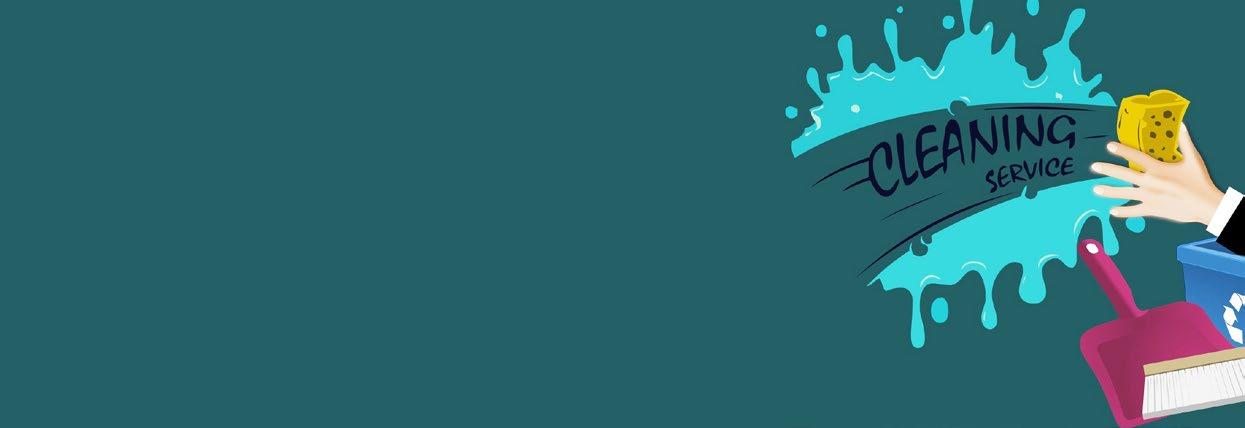
3. Underpaying is as bad as overpaying
The final step is to carefully risk-assess the bids. It takes work and a lot of finesse, but understanding the amount of labour, workable wage rates and additional considerations required to clean your facility will help you decide which bids are realistic. Does the price provide the contractor a reasonable
profit margin? If not, they won’t have the resources to do the job, possibly leading to performance issues. Remember to give unsuccessful bidders a quick call to thank them for participating and answer questions.
It is good business and good manners. And finally, if you are happy with your existing contractor and cleaning quality, consider a current contract
Setting basic workplace cleaning standards for 2023
analysis and renegotiation, supported by a market survey on prices and updated work loading.
Going to RFP or updating an existing contract is time consuming and stressful. Therefore Burke recommends reaching out to an independent expert. It will save you time, drive value, lower risk and is good governance.
The start of a new year means plans are being drawn up and forecasts are being made for the 12 months ahead.
An in-depth audit of your workplace cleaning measures could go a long way towards protecting your most important assets in 2023.
“The implications of not having a proper cleaning plan in place can be far reaching. It boils down to the protection of your capital layout as well as preserving the good reputation of your organisation over the next twelve months,” says Wahl Bartmann, CEO of Fidelity Cleaning Services.

“The potential financial loss suffered if your company must halt operations because of a workplace injury or fatality could be devastating. It simply makes more sense to do the right thing and make sure your floor or office space is clean and safe for every employee.”
Bartmann recommends that all building and facility managers or office managers conduct a proper inspection into the cleaning measures that are in place, so that any updates or changes can be implemented as soon as possible.
This inspection should focus on areas such as:
• How rigorous is the cleaning schedule? Does it adequately prevent the build-up of dirt, grime and grit?
• What measures are in place that deal specifically with high traffic areas, such as loading zones?
• If your cleaning is done inhouse, have you invested in suitable sweeping, scrubbing and vacuuming systems?
• It is also worth checking that staff have been provided with the safest and most effective cleaning products that meet all the relevant and applicable health and safety standards in the industry you operate in.
“Clutter is another aspect of workplace cleanliness that should not be neglected. Our advice to managers is to ensure that lesser used items are moved out of the way to a storage space, to prevent them from standing around in busy areas where it could become a safety risk.
“If you are unsure about the measures you have applied at your workplace, my advice is to contact a reputable cleaning service provider to visit your building and conduct an assessment. It is ultimately in your company’s best interest to put the best possible standards in place and to continue adhering to them. This is one way of ensuring success in 2023,” says Bartmann.
10 African Cleaning Review January/February 2023
Wahl Bartmann
Cost-effective, versatile and sustainably engineered
Introducing a compact and versatile trolley range, ensuring productivity with a choice of janitorial solutions and mopping options – MULTI-Matic trolley range suit all environments.
Designed for enhanced usability, productivity and simplicity, MULTI-Matic offers a choice of 7 models to suit any cleaning task or environment. Following extensive research and testing, Numatic introduced ReFlo technology that uses the highest quality recycled plastic within its manufacturing processes, delivering the same Numatic reliability, durability and quality as always. Providing a tough Structofoam construction, ReFlo technology ensures Numatic products are both sustainably engineered and built to last.
Features:
• Compact design: Small cleaning trolley, easy to store and unobtrusive in use.
• Built to last: Unique Structofoam construction using co-polymers for high-impact strength.
• Sustainably engineered: Made from high-quality recycled plastic using ReFlo technology.
• The right cleaning trolley for the right job: A wide range of accessories to suit all cleaning requirements.
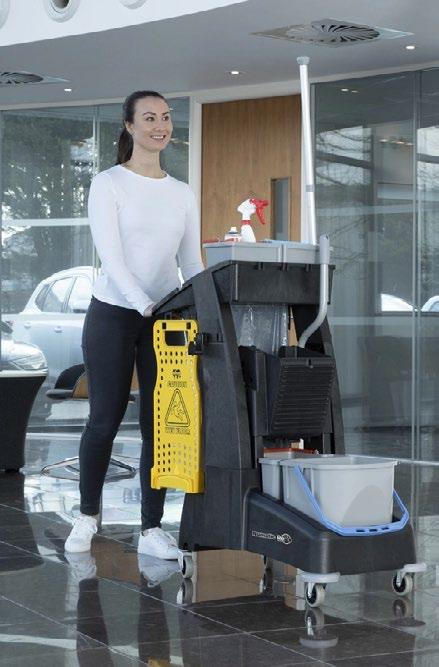
• Nu-Design: Fully configurable on the Nu-Design. A bespoke janitorial app to suit your cleaning requirements.
For more information about the MULTI-Matic trolley range, visit: www.numatic.co.za
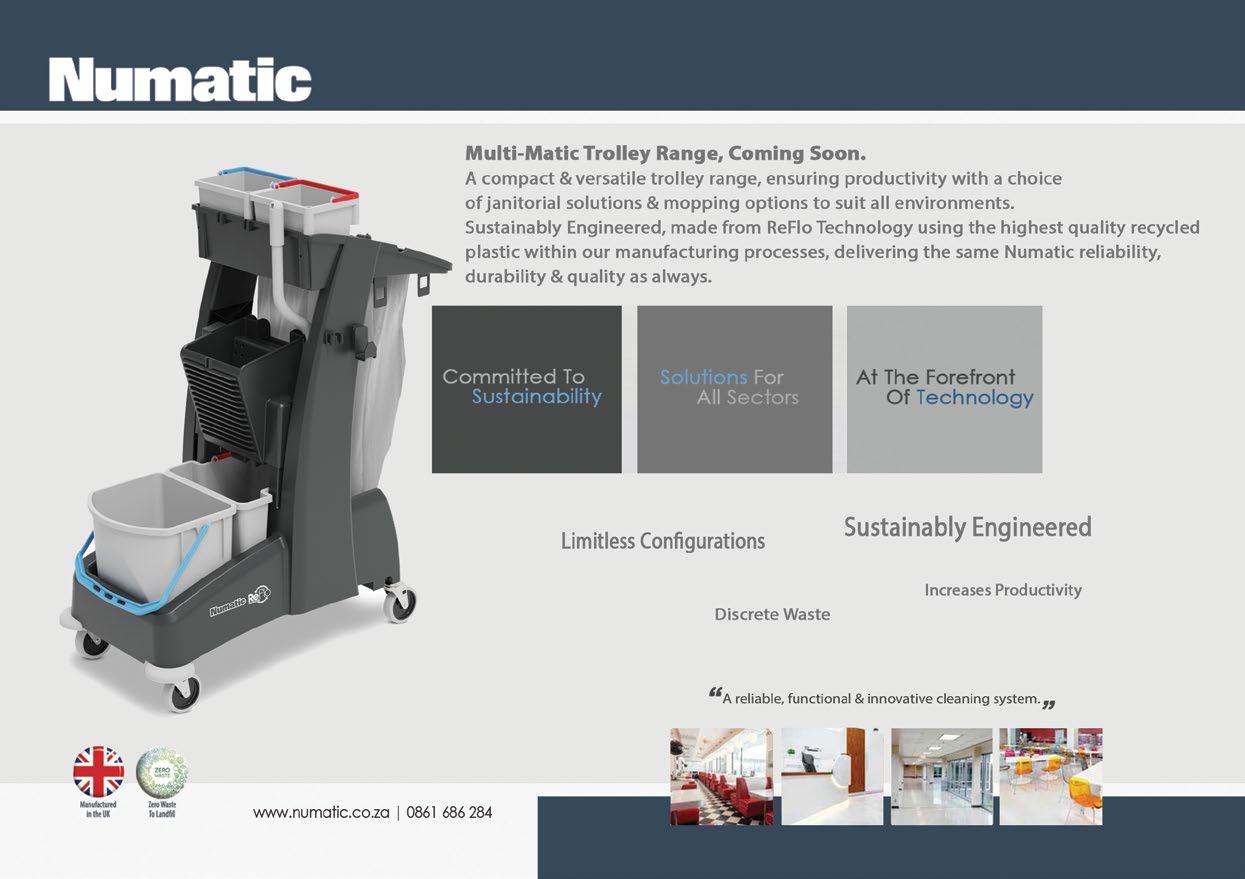
editorial Numatic
COVID-19 pandemic has made Europeans more diligent about hand hygiene
People wash their hands more frequently, are concerned about health risks associated with electric dryers, and will take action if they don’t find their preferred drying option.
Aresearch survey has found that Europeans are more aware of the importance of proper hand washing and drying since the start of the COVID-19 pandemic. They are washing their hands more frequently, demanding paper towels for hand drying due to their excellent hygiene properties and taking action when their preferred option is not available in public washrooms.

The survey, carried out among thousands of people across 10 countries in Europe1, and sponsored by ETS, probes people’s attitudes towards
hand hygiene post pandemic and explores how habits and preferences have changed. Its findings serve up food for thought for the healthcare sector and those responsible for hygiene and cleanliness in public washrooms: COVID has clearly heightened awareness of health and hygiene issues and people now expect high standards and clean facilities when they visit washrooms on the move. Over 86 percent of people report having washed their hands more often since the start of the pandemic – rising to over 90 percent in Spain and Italy.
More than half also report that the pandemic had altered their preferred method of hand drying in public washrooms – particularly in Sweden and among those aged 35–50. In most countries, men have changed their habits more than women – notably in the Netherlands. The majority of respondents across all age groups believe that paper towels are the most hygienic method of hand drying and prefer them to any other method. Almost 60 percent of people confirm that they are concerned about potential health risks associated with electric continues on page 14 >>
educational survey
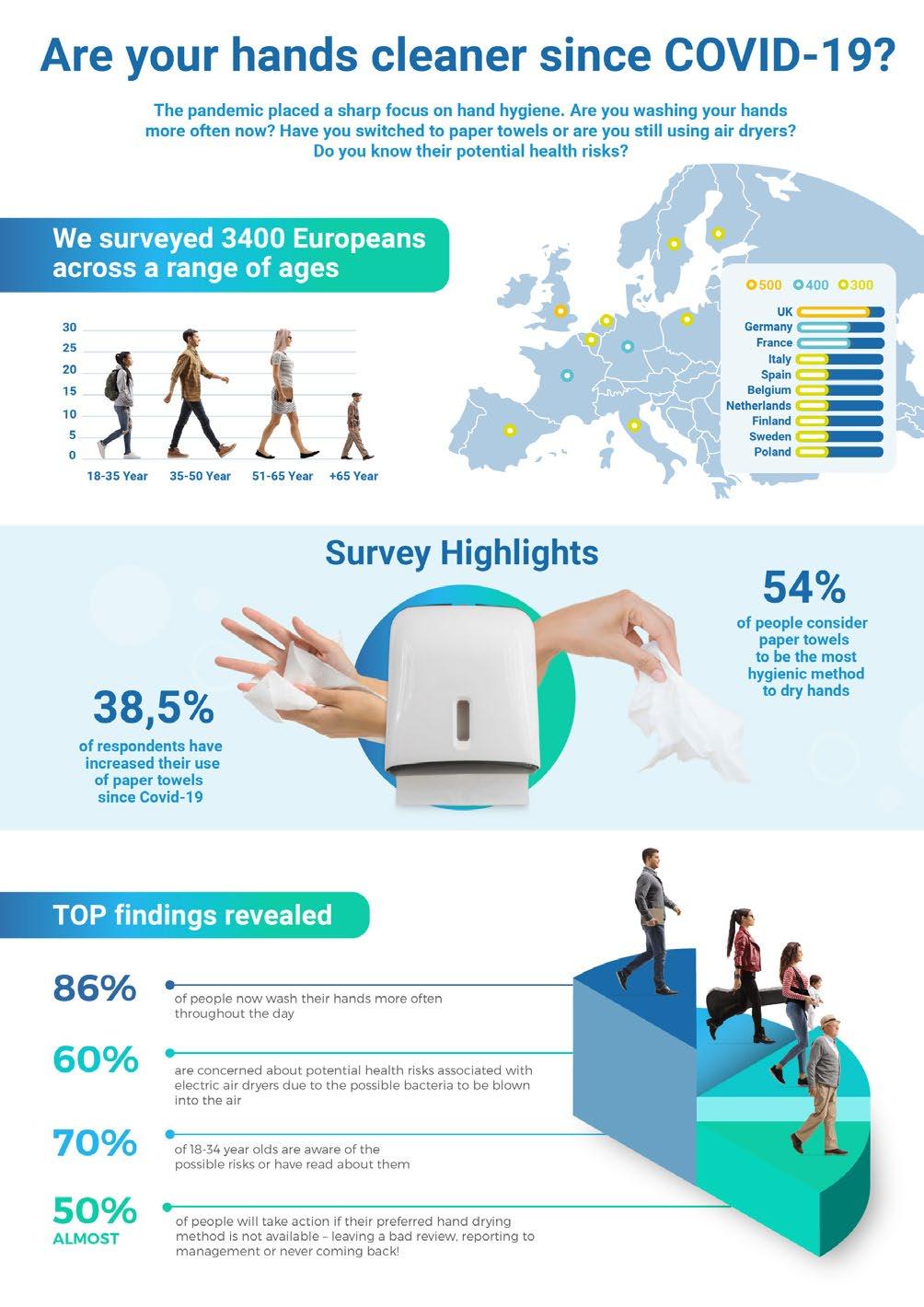
13 African Cleaning Review January/February 2023 educational survey
hand dryers due to the potential for bacteria to be blown into the air. Men are more concerned than women and younger people are significantly more concerned than older ones, with 70 percent of 18–34-year-olds aware of possible risks or having read about them. The Spanish are the most concerned and the Italians and British the least.
Furthermore, some two-thirds of people admit that if an establishment does not provide their preferred method of hand drying then it affects their overall perception of the place. And it doesn’t stop there. Almost half said they would take action if their preferred hand-drying method was not available: some will leave a bad review – particularly the Finns and the Poles; others will leave the establishment immediately and never go back – particularly the Italians and Belgians; and almost 20 percent of men will report it to the management – especially the Poles, Finns and Germans.
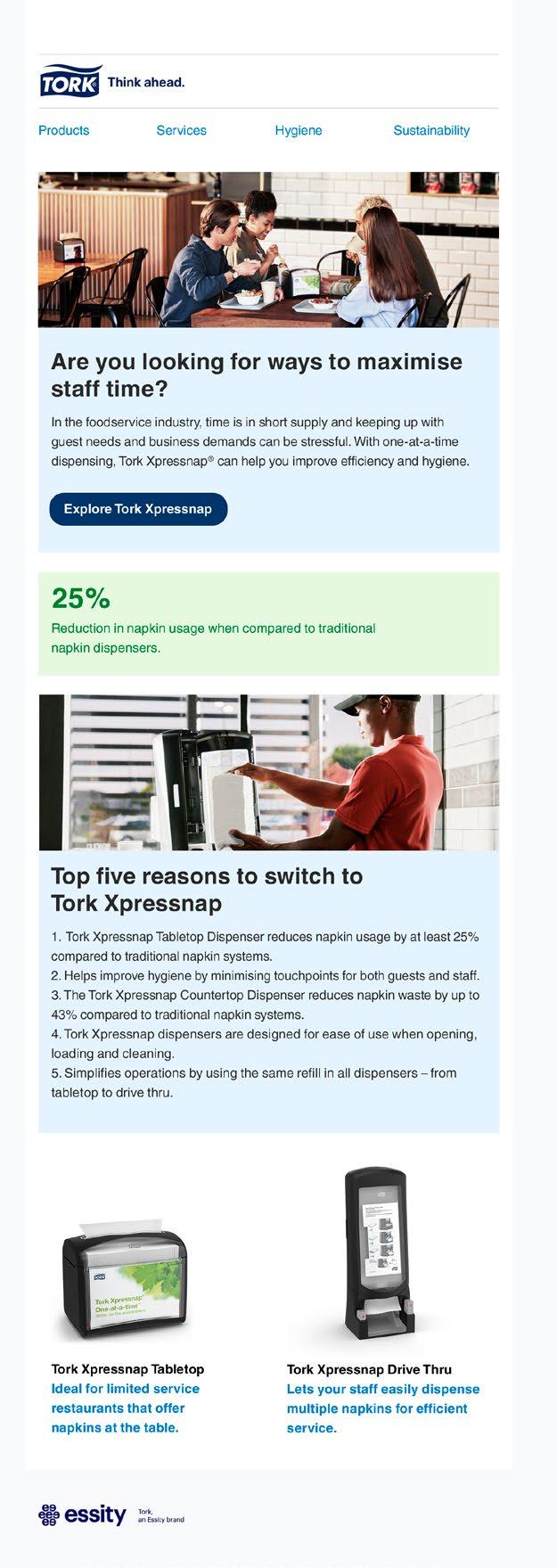
The research confirms that the hand-hygiene lessons learned during the COVID-19 pandemic have had a lasting impact on the habits of Europeans and they now have greater expectations of public washrooms. The cleaning, procurement and health sectors will need to be prepared and observe optimal hygiene standards in washrooms while also offering access to people’s preferred method of hand drying – paper towels.

14 African Cleaning Review January/February 2023
[1] Belgium, France, Finland, Germany, Italy, The Netherlands, Poland, Spain, Sweden and UK
educational survey

Tips to sustain hygiene compliance in food processing
Food-processing manufacturers place extreme importance on keeping customers and employees safe and healthy. A big part of how they do this is by consistently following government and industry hygiene and safety regulations. Over the past few years, however, food-processing manufacturers have experienced lower production capacity by an average of 3.2 times as a result of food-safety incidents and a failure to comply with protocols.1 Even a small compliance failure can slow or stop production, trigger unexpected expenses and damage a company’s reputation.
While food processors operate with very high standards, sustaining compliance levels efficiently while maintaining productivity can be challenging. More than half of food-processing production managers find it difficult to motivate workers on the production line to consistently abide by demanding requirements.1 Robust, easy-to-maintain and well-stocked hygiene and cleaning dispensers, placed exactly where needed, can increase hygiene compliance and efficiency.
A period of change and challenge for food-processing manufacturers
The food-processing industry continues to adjust to dramatic changes in customer demand, hygiene expectations, productivity requirements and sustainability goals.
An industry shift: An increase in the demand for food and beverages to be consumed at home, instead of in restaurants and other establishments, made it difficult for manufacturers to adjust their production lines while maintaining output. Disruptions in supply chains added more complications.
More compliance requirements: Stricter pandemic-related regulations have forced companies to require more frequent disinfecting and hand washing. Food-processing manufacturers have

also implemented safety practices like social distancing and temperature checks. The requirements vary for different zones, such as on the production floor versus locker rooms. These extra hygiene-related tasks require ongoing training and monitoring of employees to ensure compliance. Unfortunately, they can also slow production and reduce efficiency.
To gain clarity on hygiene-compliance efforts, food-processing managers should examine:
• How often employees are trained on hygiene compliance?
• Who is responsible for training and monitoring them?
• How much does waste due to contamination cost your business? A focus on increased productivity: Food processing is a highly competitive industry. Managers use continuous improvement principles and methods to identify and implement efficiencies wherever possible. But these must always be balanced with the need to maintain the same high levels of employee safety and product quality. This includes when facilities may be short-staffed due to a lack of qualified labour.
Consider these questions when investigating how to support productivity:
• How much downtime does your company face due to hygiene
demands, cleaning equipment, etc.?
• Does your current layout allow for workers to easily access the cleaning equipment they need?
• How much time could you save if you made the process of cleaning equipment and machines more efficient?
A drive to improve sustainability: There is a growing movement to reduce the environmental impact of food processing operations. Some of this pressure comes from consumer and retailer demand. Increasingly, however, large companies are setting their own sustainability goals and using products that require renewable or fewer natural resources.
When it comes to sustainability efforts, consider the following questions:
• What are the key sustainability actions or practices considered most crucial by your company?
• Does your company have sustainability targets?
• Do you have expectations for suppliers?
• How do you evaluate suppliers that offer cleaning products with sustainability claims?
Efficiently maintain hygiene standards
Choosing the right products and placing them in strategic areas around
16 African Cleaning Review January/February 2023 feature food-processing hygiene
a facility can help food-processing managers balance efficiency, safety and productivity with a more streamlined and organised workflow – even addressing sustainability concerns.
Hygiene compliance: Encouraging employees to follow compliance standards is often a matter of providing the right equipment in the right place. Therefore, 82 percent of foodprocessing production managers say they have experienced production delays due to a compliance failure with hygiene protocols.1 However, 94 percent of production managers agree that increasing accessibility to hygiene and cleaning materials can improve employee compliance with those regulations.1
Productivity and efficiency: Streamlined workflows are key to improving productivity, say 97 percent of production managers, while 95 percent of them agree that a lack of readily available hygiene and cleaning supplies can negatively impact efficiency. Optimising workflows
on the production floor with the efficient placement of easy-to-clean, high-capacity hygiene and cleaning dispensers can help workers find and retrieve materials quickly.

Sustainability: 95 percent of managers believe that lessening the negative impact of their business on the environment is important.1 Even small changes over time – such as using more environmentally sensitive products – can make a significant difference.
See how you can maintain efficient hygiene compliance with Tork. Tork offers a range of easy-to-clean, high-capacity hygiene products designed to help you continue to meet increasingly stringent standards while also supporting high productivity and efficiency.
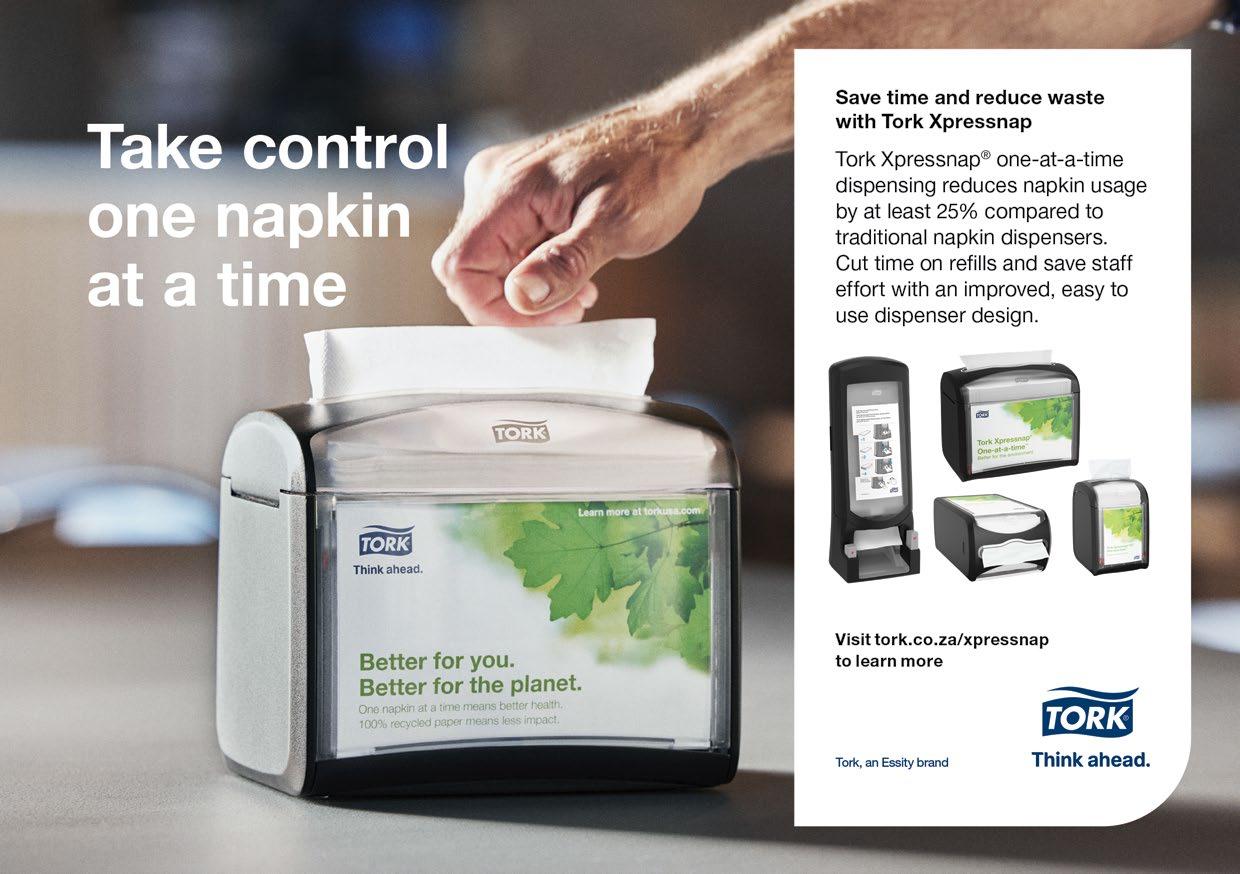
For more information, visit: www.tork.co.za
Sources
1 2021 Survey conducted by PRS Invivo in March 2021. The survey covered the US and Germany, with 100 respondents in each market.
feature food-processing hygiene
Keeping floors clean and food safe
The cleaning of floors in the food industry differs from site to site and from process to process. Regardless, the goal is the same – to maximise hygiene and minimise food-infection risks. Water is one of the main culprits in a plant, particularly in a dry processing scenario. It is known that water is a potential vector for spreading Listeria and creating the possibility of it being transferred onto product. For this reason, it’s important to keep the environment as dry as possible according to EHEDG* board member Hein A Timmerman who further expands on protocols and procedures for keeping floors in food and beverage plants as sanitary and safe as possible.
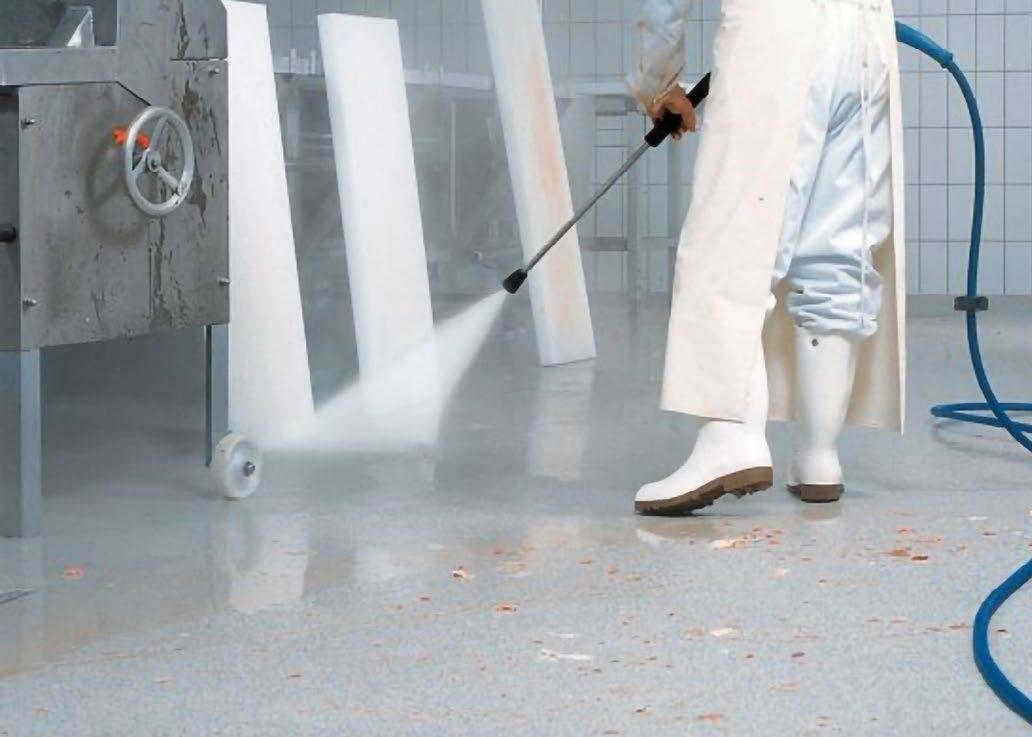
Maintenance workers should avoid using hoses, but this is not always possible given how certain plants are laid out and how they function. Break-time cleaning should be carried out manually using buckets and cloths and sanitary wipes, rather than by pouring water over the production lines.
In dry-food processing environments, floor cleaning is usually carried out by brushing and vacuum cleaning. Periodically, wet cleaning is needed but should be done with great care to ensure all residual cleaning water is fully drained and the floor is allowed to air dry.
Often in facilities that produce highrisk foods, there are no drains at all. In these cases, powerful disinfectants are used that can evaporate quickly and that have a specified non-rinse claim.
Cleaning in wet-food processing areas
In wet-food processing areas, cleaning will be affected by the available cleaning equipment and how the process equipment is configured. That’s because, most of the time, floors are cleaned together with the external surfaces of the machines. Foam is often used and is applied to all external surfaces. At the same time, adjacent floors are cleaned with the same chemistry.
The chemistry is usually an alkaline foam with sequestrants or a chlorinated alkaline product. Periodically, workers apply formulations based on phosphoric acids. The contact time lasts around 10 to 20 minutes, giving workers time to use brushes to scrub away stubborn soils. The foams are then rinsed with pressurised water at around 20 bar and with a flow rate of 30–35 l/m for each rinse hose.
Drains are not cleaned at intervals like the rest of the plant but are cleaned continuously using available equipment and cleaning products. Disinfectants based on quaternary ammonium and amphoterics are particularly noteworthy because they greatly assist in the prevention of Listeria.
Clean-in-place areas
Clean-in-place (CIP) is a method of cleaning equipment where dismantling and operator or manual involvement are kept to a minimum. It is typically used in the food and beverage industry, which requires frequent internal cleaning of equipment and processes to main high levels of hygiene.
Areas such as the CIP room, place the greatest demand on resistant flooring. That’s because a CIP installation uses strong chemistry as
a basic material – products contain concentrated sodium hydroxide or potassium hydroxide up to 50 percent, nitric acid up to 62 percent, and the list goes on. That list includes oxidative chemicals such as neat peracetic acid and sodium hypochlorite.
In CIP environments, temperatures can reach up to 80°C in storage vessels. The risk of spills is high, but generally controlled cleaning floods are released over the flooring materials and then exit through available drains. In automated process areas, certain valves will have specific sequences to release high flows of diluted cleaning liquids onto the production floor during designated cleaning cycles. Timmerman says that other nonproduction areas are often cleaned with scrubber dryers.
Though cleaning of floors may differ from one plant to the next, the one thing that remains common is the suitability and effectiveness of the cleaning chemistry.
* The European Hygienic Engineering & Design Group (EHEDG) is a consortium of equipment manufacturers, food industries, research institutes, and public health authorities. It was founded in 1989 with the aim to promote hygiene during the processing and packing of food products
18 African Cleaning Review January/February 2023 feature food-processing hygiene
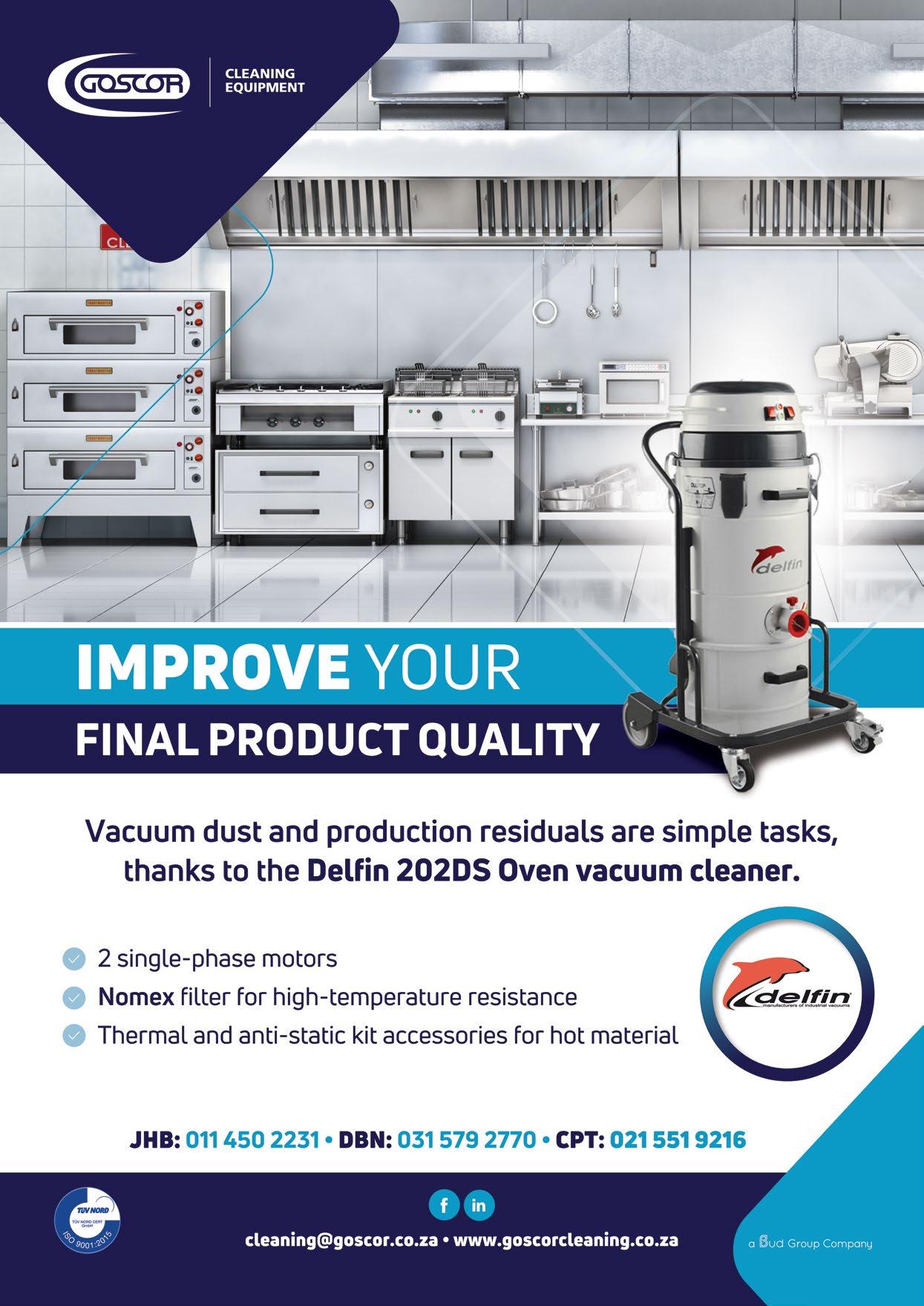
Why there is reason for hope in SA’s commercial property sector in 2023


It was renowned South African writer Alan Paton who said, “South Africa is a place where you despair on Monday and hope on Tuesday”. He said this in 1985 and in a completely different context. But, more than 40 years later, as we navigate interesting times, the quote comes quite powerfully to mind.
As lights switch on and off and political pendulums swing, there are a number of reasons to despair at the moment. I won’t dwell on them. Instead, I’d like to focus on trends in the real estate industry that give me reason to ’hope on Tuesday’.
A year of green shoots
The COVID-19 pandemic had commercial real estate against the ropes, but over the past year, we’ve seen distinct green shoots of progress. Perhaps one of the most encouraging signs has been the strong recovery in foot traffic at major shopping centres as people once more physically engage with retail spaces.
In fact, recent data has shown that mall foot traffic in some areas has recovered to and, in some cases, exceeded pre-COVID-19 levels. For our clients, this is a promising sign for 2023. When the Broll Property Management team joined property professionals on a South African Council of Shopping Centres (SACSC) tour to the United States and Mexico during 2022, it was gratifying to see innovation around spaces such as open-air malls and immersive experiences.
Sustainability means survival
Tied to this is a trend that I see as being perhaps the greatest reason for hope: a very decisive shift in the way corporates have embraced sustainability over the past year. As businesses grapple with protracted loadshedding and a scarcity
of water in some areas, it’s clear that environmental, social and corporate governance (ESG) is no longer a nice-tohave to bolster your annual report. These principles have become mandatory for survival.
And, it’s heartening to see the resilience and adaptability with which many South African businesses have risen to the challenge. While the vast majority of our energy still comes from coal, the uptake in renewable energy over the past year has been significant, with some reports pointing to a clear boom in solar installations. One report shows that South Africa accounted for 56 percent of solar photovoltaic installations across African utility-scale plants, commercial, industrial, agriculture and mining sites, and households by the end of last year.
Recognising how much the market needs to embrace and succeed at sustainability, we’ve launched an Energy, Water and Sustainability division to assist clients with navigating the sustainability journey – whether it’s working out how to ensure buildings are optimised to be energy efficient, sourcing and funding sustainability initiatives or navigating the complex regulatory environment.
Find partners who can add value for the long journey ahead
This brings me to a third trend that I see continuing in 2023: an increasing reliance on long-term partnerships to weather troubled times. While many predictions point to an easing in global inflation next year, South Africans are expected to have to weather a tough 2023. This means as we see in every sector, being cost-effective and searching for cost-effective partners is going to be a defining attribute of businesses that remain resilient in 2023.
We’re finding that it means operating at two speeds: on the one hand, capitalising on quick wins and prioritising the short-term work that will help our clients weather the storm while, on the other, also maintaining a long-term sustainability strategy. Simply put, in 2023, I expect more clients to look for partnerships that deliver value and maintain those relationships for the long-haul, because ultimately a load shared is a load halved.
20 African Cleaning Review January/February 2023 facilities management review
Broll Property Group is a leading commercial property company whose reach extends from South Africa across 15 Sub-Saharan African countries and into the Indian Ocean Islands.
Malcolm Horne Group CEO, Broll Property Group
I expect more clients to look for partnerships that deliver value and maintain those relationships for the long-haul, because ultimately a load shared is a load halved.
Drafting an integrated waste management strategy for retail business
Environmental management has become a crucial part of operating a business, and an integral component under this umbrella is waste management. No longer can a business discard all their waste into a ‘general waste’ bin; you need to have a plan for all waste streams, from solid waste recyclables to food and organic waste. Waste management for every business will look different; there is no one-sizefits-all waste management strategy.
A great waste management strategy is specifically adapted to a business’s operations, geographical footprint, supply chain and waste types. When informed by a waste situation analysis, a good waste management strategy will help you comply with waste regulations, reduce landfill disposal volumes, and create circular systems with different waste streams. Having worked closely with the retail and food sector, director of BiobiN South Africa, Brian Küsel, elaborates on the essential components of a waste management strategy for the retail sector.
Carry out a waste analysis
“The first stage of drafting a waste management strategy is to understand the big picture fully: what types of waste are generated, at what volumes, and where,” says Küsel. “Food production is also seasonal; therefore, it is important to consider that organic waste byproducts will increase in volumes during retail busy times. This means that your organic waste processing systems need to have an increased capacity to handle more waste during this time.” With a comprehensive understanding of your company’s waste generation, drafting the waste management strategy is the next step.
Setting targets and implementing a measurement system
Setting waste management targets establishes a way to monitor your business’s waste management performance,” says Küsel. “Your waste targets should be aimed at reducing landfill volumes, increasing the rates of recyclable streams, increasing the percentage of waste repurposed, and reducing the hazardous stream. In addition, targets should be businessoperations specific and clearly measurable through a data capture and processing system.
“For food and organic waste, for example, we can measure how much is placed in our enclosed composting units and what the output compost volumes are, essentially adding to the percentage of waste that is repurposed,” says Küsel.
“Another great approach to setting waste targets is to align your reduction targets with the national waste management goals. For example, implementing a 50 percent organic waste landfill diversion in line with the Western Cape’s goal of a 50 percent diversion in 2022. Or, perhaps a more international approach, by halving your food waste by 2030 in line with Sustainable Development Goal 12.3, known as the food waste index,” adds Küsel.
Ensuring waste management compliance
“A crucial part of any waste management strategy is clarifying the legal requirements of managing different waste streams. In most instances, waste types need to be kept separate, and an inventory should be kept. Hazardous waste needs to
follow specific containment protocols depending on its type,” says Küsel. “With monitoring for compliance, it is also important to assign roles to personnel to keep track of waste data and maintain the inventory.”
“With BiobiN, every time a volume of organic waste is put into the unit, it is recorded, and we can monitor this conversion into the volumes of compost as the output resource.”
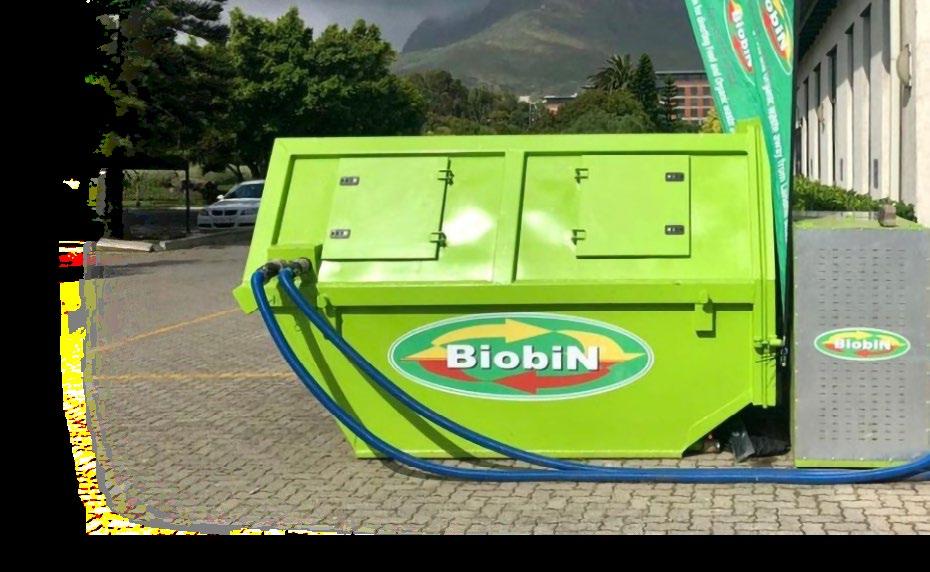
Identifying circular systems and on-site composting opportunities
“While waste management compliance is important, the waste sector has shifted its focus to the circular economy. Attention is not only on solid waste recyclables but also food and organic waste circularity,” says Küsel. “On-site composting technology and other waste repurposing systems have improved significantly in recent years, and with an increased consumer awareness on the impact of waste and tightening regulations, there will be greater expectations placed on businesses to create a circular system with waste.”
Conducting annual reviews and revised targets
“What were the volumes of organic waste generated this year versus last year, what is the percentage difference, and how far are you from your target? This is what your reviews should be looking at,” says Küsel. “We often find that our clients, through the use of BiobiN, meet their organic waste targets, which often presents the opportunity to set more ambitions targets for the next year.”
For more information, visit: www.biobin.co.za
21 African Cleaning Review January/February 2023 facilities management review
The healthcare laundry’s role in infection prevention

Environmental sources of pathogen organisms can sometimes be difficult to narrow down in a healthcare facility. One possible source of transmission is the laundry used, and not maintaining strict cleanliness attention can put both patients and workers at risk as there are many ways for pathogens to hitch a ride in the hospital environment.
A healthcare facility is a busy place, filled with a myriad of devices and complex situations. Preventing hospitalassociated infections feels like it requires an encyclopaedic knowledge of every new and complicated healthcare intervention. Potential sources of transmission in the hospital include a remarkable array of specialised risks, but there are mundane, everyday risks like healthcare laundry too.
Which textiles are re-used and laundered varies from healthcare facility to healthcare facility. Typical healthcare linens include patient and staff bedding, towels, clothing (scrubs, coats, uniforms, patient pyjamas and gowns), surgical drapes, curtains and reusable mop heads. Hospital linens can harbour a significant density of pathogenic organisms, from 106 to 108 colony-forming units per 100 cm2. Those most commonly isolated include gram-negative organisms Enterobacterales, Pseudomonadaceae as well as Staphylococcus species. Despite this noteworthy pathogenic burden, the significance of linens in healthcare transmission is unclear. When an infection occurs, it may not be possible to identify the exact environmental source of transmission because multiple potential environmental reservoirs exist in parallel. Although healthcare linens are not often implicated, it makes intuitive sense that they are a potential reservoir for transmissible organisms.
Workers who handle laundry are at increased risk of transmission, including of gastrointestinal pathogens. Definitive associations between linen contamination and patient infections are harder to analyse. Nevertheless, there is a need for meticulous attention to maintaining linen cleanliness.

It may be simplest to separate hospital linen-associated risks into 3 distinct sections: 1) removal; 2) cleaning; and 3) storage.
Removal
Ensure linens are removed, stored (if necessary), and transported safely to the cleaning facility. Soiled linen poses a danger to healthcare staff and possibly to patients. All used linen should be considered potentially infectious. Linen should not be shaken or disturbed in a way that could aerosolise infectious particles. Personal protective equipment that would be worn around the patient should also be worn when removing and packaging soiled linen for transport. If there is gross contamination without transmission-based precautions, standard precautions will necessitate the use of additional personal protective equipment. Some infections, including orthopoxviruses, are transmitted by contaminated linen. Linen should be contained before removal from a patient’s room, taking care not to disturb or aerosolise any infectious particles. Note should be taken that the exterior of bagged linens may become contaminated, even with double bagging. In many healthcare settings, soiled linen must be gathered and transported to an off-site location.
Cleaning
Adequate cleaning and disinfection is essential. The 2003 Guidelines for Environmental Infection Control in Health-Care Facilities from the CDC and the Healthcare Infection Control Practices Advisory Committee provides detailed standards for healthcare laundering, including achieving minimum temperatures and disinfection concentrations that ensure pathogens will be inactivated. In most cases, processing according to these standards should be effective, even with the monkeypox virus. A few organisms may resist disinfection in the laundry. A study looking at the relative thermotolerance of enterococci showed that they were inactivated during the washing cycle, despite tolerance to the high temperatures alone. Clostridioides difficile spores inoculated into cotton sheets and run through a simulated hospitallinen washing cycle were noted to remain viable after cleaning. An obvious potential pitfall during cleaning is failure to achieve intended time, temperature or disinfectant concentration minimums. Excursions may be difficult to detect if laundry is managed off-site or by a contractor. A busy infection prevention service may not have the bandwidth to survey off-site or contracted linen services more than once or twice a year. Trust and communication with those
22 African Cleaning Review January/February 2023
laundry review
responsible for linen processing are critical to ensuring prompt notification and resolution if an issue is discovered. Processed linen should make it to the patient’s bedside clean. The quintessential infection prevention standard – separation of clean and dirty – must be baked into the management of clean linen. A unidirectional flow at the laundry-processing facility will help prevent pathogens from soiled linen coming into contact with the clean linen, even indirectly from the hands or clothing of workers. Laundry surfaces should be routinely disinfected, and hand hygiene should be monitored for compliance. Laundering requires both heat and water – prerequisites for the growth of pathogenic mould. Healthcare outbreaks of mucormycosis have been linked to linens. In a vulnerable patient population, mould exposure is associated with severe or life-threatening infections. If linen must be transported from an off-site facility, it should be covered during transport to prevent contamination. Linens still warm from processing should
be allowed to reach ambient temperature before covering, as condensation and reduced airflow promote mould growth. Once linen arrives in the hospital, it should be unloaded promptly and stored in a manner that prevents contamination.
Storage
Within the clean-linen supply, contamination may occur from hands of healthcare workers accessing clean linens without first performing hand hygiene. Clean storage rooms should be protected and monitored for deviations of temperature, humidity and damage associated with floods. Co-storage with soiled items or devices like refrigerators that include fans and condensation or generate heat should also be avoided. Prevent contamination by ensuring covers or cabinets are kept closed. Methods of storing and using linens may vary. The astute infection preventionist may need to use shoe-leather epidemiology to identify how linens make it ‘the final mile’ if there is a concern for potential transmission.
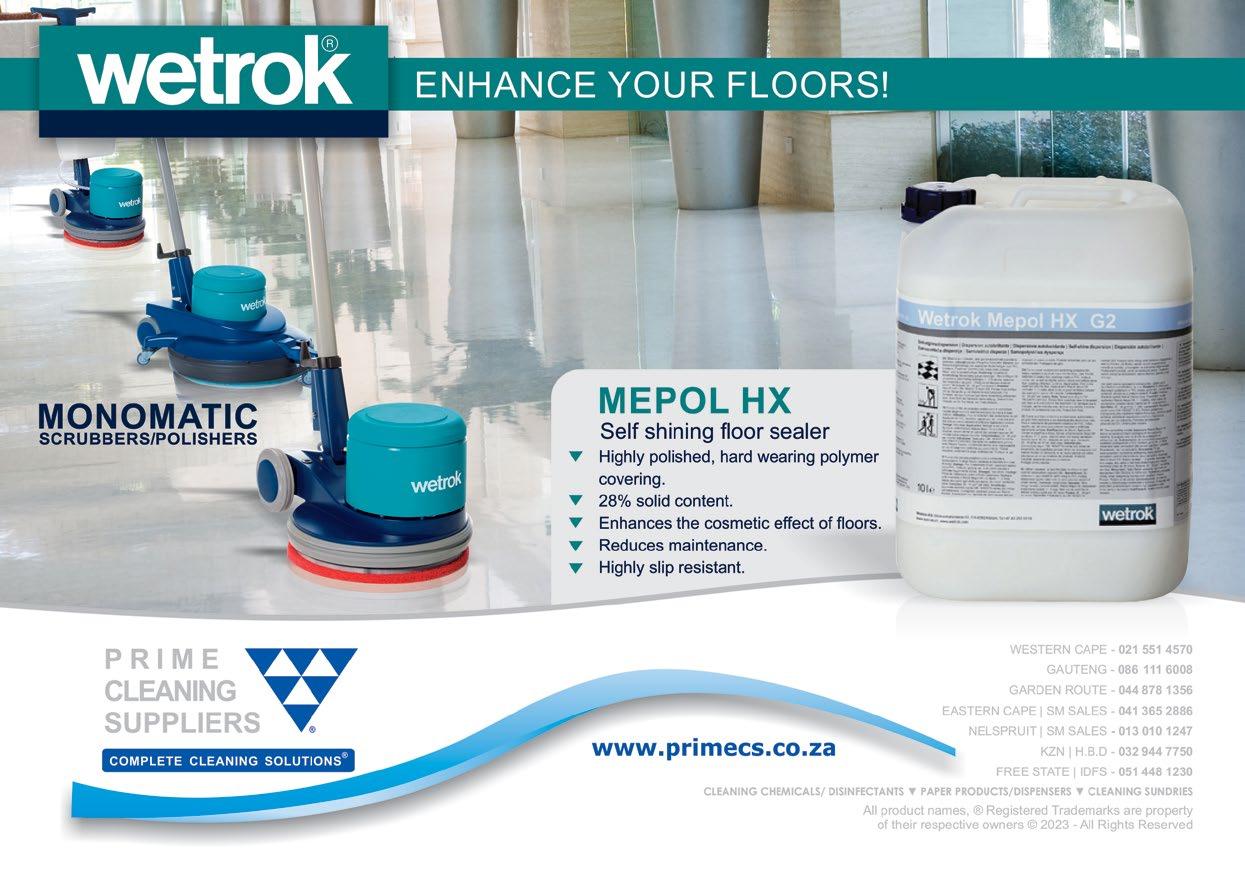

If there is a delay from when a bed is made to when a patient occupies the room, how long before linens would need to be replaced? Is there a mechanism to identify whether a bed is used surreptitiously? This may not be a concern for busy facilities with high occupancy, rapid turnover and adequate call room space, but with the change in elective procedures during the COVID-19 pandemic, there may have been changes to patient and employee flow. A process to ensure linens are freshly made immediately before patient arrival will reduce the risk of contamination.
There are many ways for pathogens to hitch a ride in the hospital environment. Linen is only one of many potential fomites that could be implicated in environmental transmission of hospital pathogens. Ensuring soiled linen is appropriately contained, transported, cleaned and stored is essential to preventing transmission from this easyto-overlook aspect of the healthcare environment, according to Infection Control Today
laundry review













2023
Invitation to join the 2023 tour to Milan, Italy
Be part of the planned tour for African cleaning professionals to Italy’s foremost show for the professional cleaning, hygiene and pest control sector. The 26th edition of ISSA PULIRE will take place from 9–11 May 2023 in Milan, widely regarded as the European metropolis of art, work, fashion, opportunities and innovation. It is also Italy’s business and entertainment capital, with thousands of clubs, pubs, experiences and attractions of all kinds including the world’s oldest shopping mall, the Galleria Vittorio Emanuele II.

ISSA PULIRE, taking place at the Fiera Milano Exhibition Centre this year, is the largest professional cleaning industry trade show in Italy and plays host to a complete range of machinery, chemical products, equipment and components for professional cleaning and hygiene in indoor and outdoor spaces. In addition, this year will see the introduction of a Pest Management pavilion featuring companies active in environmental hygiene that produce and distribute pest management products. “The idea is to involve all environmental hygiene professionals both in indoor and outdoor areas under the same roof, thus representing more value for both exhibitors and visitors,” says Toni D’Andrea, CEO of ISSA PULIRE Network s.r.l.
After spending 3 nights in Milan, the tour will depart to Lake Como, situated in northern Italy’s Lombardy region; it is glamorously known for its dramatic scenery, set against the foothills of the Alps. The lake’s shape resembles an upside-down Y, with three slender branches that meet at the resort town of Bellagio. At the bottom of the southwest branch lies the city of Como, home of renaissance architecture and a cable railway that travels up to the mountain town of Brunate. Lake Como is one of the most beautiful lakes in northern Italy. The views are not only confined to the lake – the surroundings are equally stunning. The 3-night stay at Lake Como will offer mountains sunsets, villas and small towns providing a perfect escape from Milan or any other big city.
Italy tour itinerary: 7

Tour package includes transfers to and from airport, hotels and Fiera Milan, welcoming cocktail party and 6-night fourstar bed-and-breakfast accommodation and farewell dinner.
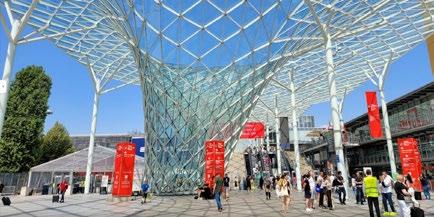
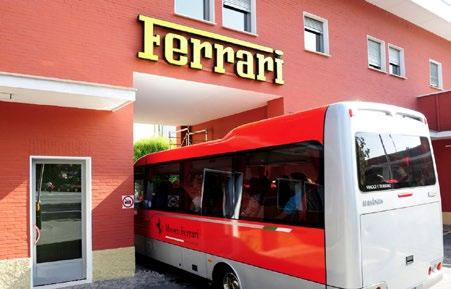
Book now to avoid disappointment – limited space available
For more information about the upcoming Italian tour package rates, contact Steve Braham at: +27 (0) 83 2651268 or email: steve@swbagencies.co.za
25 African Cleaning Review January/February 2023 advertorial ISSA Pulire
May 23: flight departs Johannesburg’s OR Tambo International
May: arrive in Milan
May: attend ISSA PULIRE show
May: depart for Lake Como via the Ferrari Modena Museum
May: depart after lunch from the resort town of Bellagio to Milan airport 15 May: arrive in Johannesburg
8
9–10
11
14
The Ferrari Modena museum offers visitors a unique and engaging opportunity to relive the history of the Prancing Horse and its founder.
According to the company, it achieved an over 300 percent increase in robotic deployments during the year as retailers leaned heavily on cleaning automation to help better manage ‘a constant state of clean’ caused by the ongoing public health crisis. “Given the rapid adoption rates and strong value proposition, robotic solutions are clearly becoming the new commercial cleaning standard,” said Dr Eugene Izhikevich, CEO at Brain Corp.
Currently there are several thousand Autonomous Mobile Robots (AMRs) deployed in the public environment, and, in many cases, these systems are tasked with cleaning retail and grocery stores, real estate, malls and airports. It is therefore opportune to take a closer look at how AMRs can assist in improving cleaning efficiency and quality as global retailers ramp up their adoption of robotic floor scrubbers and other autonomous solutions in the wake of the global pandemic.
While relatively new to the cleaning industry, AMRs can help improve
The business value of autonomous mobile robots
A recent record growth year announcement by Brain Corp, an artificial intelligence (AI) software company creating transformative core technology in robotics, again highlights the role of autonomous cleaning in the professional cleaning industry.
cleaning efficiency and quality. Unlike automatic scrubbers that require human oversight, AMRs function without hands-on operation to enhance the work of cleaning staff. They are specifically designed for repetitive floor cleaning and operate via a connection between the scrubber and a smart device. This connection allows employees to set the machine to autonomous mopping, sweeping or scrubbing in a designated area.
AMRs are particularly beneficial for larger facilities, such as grocery stores, warehouse and logistic centres, and higher education buildings. These structures tend to have high-traffic areas that require regular cleaning, and the vast square meterage of their hard-floor surfaces gives AMRs plenty of room to manoeuvre. In fact, to date, micro-rider floor scrubbers powered by BrainOS® software have autonomously cleaned more than 9,290,304 square kilometres and counting.
Building AMRs into work-loading efforts can provide additional benefits,
especially when it comes to saving time and labour. The AMRs clean the most time-consuming areas, while employees focus on cleaning and disinfecting detailed, high-touch areas.

Connect work loading and automation
At a basic level, work loading involves leveraging verified productivity rates to determine what areas of a facility staff need to clean and how long it should take to complete specific tasks. ISSA, the worldwide cleaning industry association, has developed The Official ISSA Cleaning Times – a resource that assigns times to particular cleaning jobs. In addition to determining how long cleaning tasks take, work loading answers other questions, including:
• Which areas and surfaces are workers cleaning?
• What equipment are they using to clean?
• What is the process for cleaning or maintaining the area?
• Who is performing the task and where?
26 African Cleaning Review January/February 2023 trends and technology
trends and technology
Work loading is not just about individual tasks – which are essential and need to be accounted for – but, more importantly, how tasks tie together in the flow of the cleaning staff’s work day.
Effectively adding AMRs to a cleaning programme requires a shift in mindset and facility culture. According to the ISSA Cleaning Industry Management Standard (CIMS), 55 percent of a facility’s operational budget is labour. Therefore, it is important to have employee buy-in before introducing AMRs. Labour retention is already a challenge in the industry, so facility managers and building service contractors (BSCs) need to reinforce the value of their staff. The key is to reassure employees that the AMRs won’t replace their jobs, but rather augment their positions and prepare them for higher-level career opportunities.
Create a checklist for implementation
Implementing AMRs requires attention to several details to achieve the best results – not only as it applies to the equipment, but also to the cleaning staff.
Identify capabilities
The first step is to identify what the AMR can do during a work shift. For example, an autonomous scrubber’s purpose is to maintain hard-floor surfaces. Look at the large spaces where the AMR could replace manual mopping or the need for an employee to walk behind an automatic scrubber. This provides insight into how staff could shift their focus to other tasks.
temperature and humidity can affect operation.
Set expectations
Many facilities do not have up-to-date quality assurance expectations. When integrating an AMR, communicate expectations to employees about the importance of the detailed cleaning they will take on while the AMR handles the routine floor cleaning. CIMS helps determine cleanliness outcomes, so deliverables are clear within the scope of work and in the service plan.

Provide training
Even though AMRs take care of hardsurface floor cleaning, employees are responsible for setting them in motion. Provide detailed training on how to set the machine to its tasks and how to address any stoppages. Cleaning teams will receive a stoppage alert on their smart device and need to know how to troubleshoot quickly to maintain efficiencies.
Support certification
As team culture can shift with the addition of AMRs, engaging cleaning staff in the planning stages of implementation can help keep the culture positive. Ensure that staff members realise that AMRs remove the time-consuming floor-cleaning tasks from their daily routine and introduce efficiencies into their workflow and allow them to focus on detailed work that may have been difficult to complete before.

Test the AMR
Be sure that AMRs integrate into the cleaning programme based on real-life deployment. Select and test different floor-cleaning scenarios, calculate the time it takes to complete the task, and add obstacles that could impact timing and performance. Set up different traffic patterns and changes within the built environment – whether it’s rearranging furniture or altering soil types on the floor. Test the AMR’s operation during different times of the year, since
Facility visitors are looking at inhouse providers and building-service contractors as the cleaning experts. Highly knowledgeable employees are a benefit to the team. Enrolling them in certification courses increases their skills while also making a positive impact on company culture.
Abridged version of an article by Adam Camhi, vice president of flooring solutions at Sunbelt Rentals and Brant Insero, ISSA director of education, training, certification and standards.

27 African Cleaning Review January/February 2023
For
The key is to reassure employees that the AMRs won’t replace their jobs, but rather augment their positions and prepare them for higher-level career opportunities.
more information regarding advertising / editorial / digital packages, email: nande@cleantex.co.za www.africancleaningreview.co.za
Advertise in the primary African trade magazine for the commercial cleaning and hygiene sectors. Reach your target market cost-effectively with a direct link to end-users, building service contractors, facility management and key institutional segments.
Ensure that staff members realise that AMRs remove the time-consuming floor-cleaning tasks from their daily routine and introduce efficiencies into their workflow and allow them to focus on detailed work that may have been difficult to complete before.
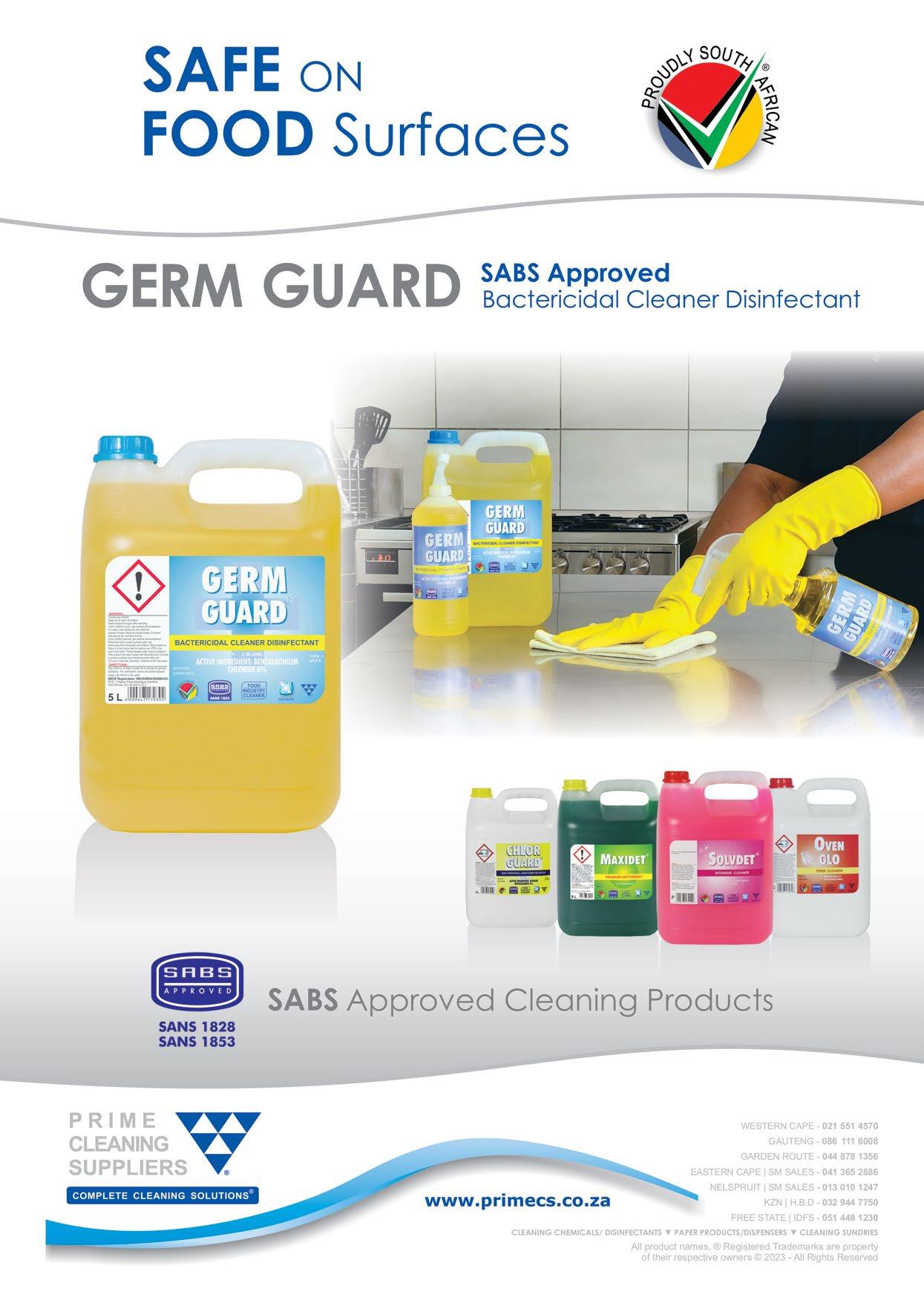
r Absorbents – Oil/Chemicals
r Access Equipment/Ladders
r Air Cleaning Equipment/Air Duct
Cleaning/Indoor Air Quality Systems
r Air Filters/Air Purifiers
r Air Fresheners
r Anti-Stain Treatments
r Baby Changing Stations
r Bactericides
r Barrier Creams & Cleaners
r Biological & Enzyme Products
r Bird Repellent
r Bleaches
r Buckets/Wringers
r Carpet Cleaners
r Carpet Cleaning Systems
r Carpet Detergents
r Car Valet Products/Services
r Car/Truck Wash Systems/Services
r Catering Equipment Cleaning
r Catering Hygiene Products
r Ceiling & Wall Cleaning Equipment
r Chemical Dilution & Dispensing Systems
r Chewing Gum Removal
r Cleaning Chemicals/Agents & Consumables
r Cleaning Equipment/Cleaning Equipment Hire
r Cloths & Dusters
r Compactors/Compactor Bags & Tubing
r Computer & Cleanroom Cleaning
r Curtain Cleaning
r Customised Cleaning Solutions
r Descalers & Degreasers
r Detergents
r Dishwashers
r Dishwasher Dispensing Equipment
r Disinfectants & Sanitisers
r Disinfection/Decontamination/Fogging/ Sanitisation Services
r Dispensers/Dispensing Products
r Dosing Equipment
r Drain & Grease-Trap Maintenance
r Drain Cleaning Chemicals
r Drain Cleaning Equipment
r Dryers – Tumble/Clothes
r Duct & Gutter Cleaning
r Dust Control &/or Logo Mats
r Dust/Litter Bins
r Dustpans, Dusters & Brushes
r Escalator Cleaners
r Fabric Softeners
r Facial Tissue
r Facilities Management
r Floor Pads
r Floor Polishers
r Floor Scarifiers
r Fragrance Units
r Glass Cleaning Chemicals
r Glass & Aluminium Restoration
r Gloves – Disposable/ Plastic/Rubber/Latex
r Graffiti Removal Products
r Green Cleaning/Products
r Guest Amenities/Hospitality/Toiletries
r HACCP Cleaning Specialists
r Hand Cleansers & Protectors
r Hand Dryers (Air)
r Hard Floor Treatments
r Hazard Material – Disposal/Control/
Emergency Spill Response/Clean-up
r High-Pressure Cleaners
r Housekeeping – Carts
r Hygiene &/or Cleaning Consultants
r Hygiene Audits
r Hygiene Brushware & Consumables
r Hygiene Services
r Industrial Chemicals
r Industrial Cleaning Systems/Solutions
r Industrial Laundry
Equipment/Dispensers
r Insect Killing & Pest Control
Equipment/Repellent
r Irons – Steam/Automatic
r Laundry Bags/Bins
r Laundry Design & Layout Consultants
r Laundry & Dry Clean Consumables
r Laundry &/or Dry Cleaning Services
r Laundry Suppliers
r Liners – Dustbins
r Lubricants
r Matting
r Microbiological Testing
r Microfibre Products
r Mopping & Flat Mopping Systems
r Mops – Dish/Floor
r Nappy & Incontinence Waste Disposal
r Odour Control Services/Management
r On-Premise Laundry Systems
r Paper, Serviettes & Wipes (Disposable)
r Paper Towel Dispensers
r Parts & Accessories – Floorcare & Laundry Equipment
r Pest Control Services
r Pesticides
r Polishes
r Presses – Trousers/Coats
r Protective Clothing/Workwear
r Recycling Equipment
r Refuse Disposal Equipment, Vehicles & Systems
r Road Sweepers/Vacuum Trucks
r Robotics
r Sanitary Bins
r Sanitary Bin Services
r Sanitary Disposal
r Scourers – Floor
r Scrubbers/Scrubber Driers/Sweepers
r Single Disc Floor-Maintenance Machines
r Soaps & Soap Dispensers
r Solvents & Strippers
r Specialised Cleaning Services
r Speciality Own-Label Products
r Spray Extraction Cleaners
r Squeegees, Brooms & Brushes
r Steamers – Clothing
r Steam Cleaners
r Sterilisers
r Surface Cleaning Pads & Cloths
r Sweepers (Manual/Ride-On)
r Telephone Cleaning
r Terrazzo Floor Cleaning
r Textile Testing
r Time, Attendance and People Management Solutions & Software
r Toilet Cleaners
r Toilet Seat Sanitisers
r Toilet Tissue
r Towels/Disposable Towels
r Training & Education – Development/ Recruitment/HACCP

r Training Materials, Books, Software, Reports, Videos
r Trolley Systems
r Upholstery Cleaning
r Urinal Dosing Systems
r Urinal Gel Block/Pads
r Vacuum Cleaners – Wet/Dry
r Ventilators & Ventilation Systems, Kitchen Extraction Systems – Cleaning
r Washing Machines
r Washroom Accessories & Consumables
r Waste Disposal Systems
r Waste Environmental Management
r Water Treatment Systems
r Window Cleaning
r Window Cleaning Equipment
r Woven & Non-Woven Wipes
r Other (Please specify):
CompleteNOTLISTEDYET? theformtosecure apresenceinBuyer’sGuide2024
Buyer’s Guide 2024
Harness the power of this comprehensive reference manual containing products and services available within the cleaning and related industries.
Ensure that your company is listed in the next Buyer’s Guide – the only reference tool for companies and individuals requiring information about hygiene, cleaning, maintenance, pest control, laundry, dry-cleaning, wasteand facility management services.
EMAIL: africancleaningreview@cleantex.co.za in order to secure your copy entry in the African Cleaning Review 2024 Buyer’s Guide edition. Once-off charge: R500 for 365 days

DEADLINE: NO ENTRIES CAN BE ACCEPTED AFTER 15 DECEMBER 2023
Please complete the form in BLOCK LETTERS
Company name: _____________________________________________
Head office address: _________________________________________
Email: ____________________________________________________
Website: _________________________________________________
Tel:
Cell: _____________________________________________________
Social media: Tick: FB | Twitter | LinkedIn
Other: ____________________________________________________
Major activity of company: _____________________________________
Brand/s represented: _________________________________________
Association member: _________________________________________
Tick: NCCA | ISSA | BEECA | SAFMA | SAPCA
Other:____________________________________________________
Tick: Yes, we want to advertise in the Buyer’s Guide
Tick: Logo | Strip | Websearch | Website button
Ts & Cs apply
Person completing form: _
Email: ____________________________________________________
Cell: _____________________________________________________
Date: ____________________________________________________
NB: Product Entries Tick in the appropriate block/s for services, products and equipment manufactured or distributed by your company. Please tick no more than 10 main products/services as additional entries can not be guaranteed.
10 MAIN ENTRIES ONLY


















































































